|
Logging our steps for every day of the trip (in reverse order): Top row (from left to right):
Monday, 2/25, Sunday 2/24, Saturday 2/23 Second row from top (from left to right): Friday 2/22, Thursday 2/21, Wednesday 2/20 Third row from top (from left to right): Tuesday 2/19, Monday 2/18, Sunday 2/17 Fourth row from top (from left to right): Saturday 2/16, Friday 2/15, Thursday 2/14 Bottom row (from left to right): Wednesday 2/13
0 Comments
Today was quite the bittersweet day. We woke up, ate breakfast, and loaded the bus for Munich. After an hour long bus ride full of much needed naps, we arrived at the BMW Welt where we were able to sit on/in BMW motorcycles and cars. Then, we loaded the bus again and headed to the airport. Disaster struck when four members of our group were not given seats on the plane due to overbooking. As usual, Ms. Freeman utilized her negotiation skills and was able to get these people seats eventually. After spending a little time in the airport, we took a train to our gate and boarded the plane. About six hours went by before [potential] disaster struck again. Due to the winds in the Boston area, our plane hit major turbulence for about thirty minutes which led to babies crying and bags sliding around the plane (at least from where I was sitting in the back row). Eventually the plane landed, we headed through customs, and collected our luggage at the baggage claim. Overall, I think I can speak for the entire group when I say that this will be a trip we will always remember, and it feels surreal that it’s over. Good luck to everyone at school tomorrow! --Julia Day 12 of the trip, our last day, students had their final hotel breakfast and boarded the bus. We then had a few hours bus ride to BMW world where we walked around showrooms of cars and motor cycles, getting to sit in them. We boarded the bus for the last time and drive to the Munich airport to catch our flight back to Boston. Just when we thought there’d be no more “excitement” on the trip, the plane overbooked and 4 of our 53 members did not get assigned seats. With the no man left behind mentality, the airline was told that either all 53 of us were getting on board that plane or none of us would and that we would hold up the airplane. Thankfully, we arrived as we predicted and did not stay in Germany longer than planned.
Looking back on these 12 days and nights spent in Eastern Europe, I can certainly say that I’ve never had an experience like this one. Never in my life have I eaten more amazing food, gotten so little sleep, or had so many jam packed days in a row. While the trip flew by, it seems like I’ve been away from home for much more than 12 days. Every day was filled with activities and everyone I’ve talked to agreed that while the days felt long, in some cases spending easily 16 or more hours out, collectively they went by very quickly. Some of the longest days where we walked around cities visiting monuments and museums for hours without stop were the most fulfilling and assured that I got a good night sleep. Exploring cities with small groups and freedom was very fun and gave me a sense of what it would be like to live in these places and not just be in a large tour group. Thanks to the champerones, we made it from Boston to Germany to Poland to Czechia back to Germany and finally Boston. For me, the days have blended together to form a unforgettable trip that I will look back upon with great happiness. While today’s weather in Boston was not the greatest as wind speeds were immense causing a bit of a turbulent landing, it made to a thrilling end to the trip. A huge thanks to all the chaperones, tour guides, parents, and fellow travelers that made this trip possible and memorable. --Leah How do we judge actions? This is the question of the day.
Today was marked most heavily by three concepts: legacy, power, and justice. As I know that at least person will be addressing concepts of memorials today, I will allow them to do such. I also believe that concepts of propaganda and the Nazi’s rise to power have been quite prominent themes on this trip. Therefore, the most powerful theme will be discussed here: justice. This morning, while driving to Nuremberg from Prague, we watched a film titled Sophie Scholl: The Final Days. Sophie Scholl was a fighter who was in the White Rose resistance movement and she was found distributing leaflets which educated the general public on what the Nazis were doing so that their crimes would not be unknown. Having been discovered and interrogated, Sophie, at the climax of the film, appears before a court in order to be judged by the law. The leading judge screams at all the defendants and makes it clear that he is unwilling to be unbiased. He announces his opinions of each defendant before his questions begin. Eventually, Sophie and much of her group are either tortured or, as in the seen case, killed. This is a key example of how lady justice cannot breathe under a corrupt system. Here, the accused are guilty until proven dead. [N.B. from Ms. Freeman: Today (2/22) was the anniversary of the executions of the members of the White Rose group.] The second situation took place alongside the Nuremberg trials and was mentioned briefly in the museum dedicated for such trials. The trials in question here are the Tokyo trials which sought to prosecute the Japanese officers who committed genocide in the east. Very little time was spent in such a topic, but what was shown talked about the idea that those who were prosecuting were in search of a punishment to a crime which they did not believe needed to be proven. Those tried may be seen guilty until a punishment was chosen. The final situation concerns the crimes of the Nazis. These are judged from two angles. The first angle is that of the public and the world, such as evidenced by the Nuremberg trials. The other is in the eyes of the Nazis themselves. The Nazis destroyed much evidence, and many high ranking officials of party committed suicide. Many of the Nazi documents were burned or destroyed. I have been thinking a lot about this recently, because the destruction clearly evidences that the Nazis knew that what they were doing was wrong. They knew that there was clear proof that they had committed great crimes and broken the laws of the land, such as the Geneva conventions. They weren’t delusional in thinking that they were perfect and in thinking that the world could approve of their actions. They were guilty in their own eyes. The other perspective, that of the rest of the world, offers the conventional approach to justice. The world knew that these crimes were morally wrong, but they nevertheless proceeded to hold a trial for all high ranking, living Nazi officials. Whether or not such a trial was truly fair is debatable, with te defense side having fewer opportunities to research and present evidence. However, this model consisted of forcing criminals to truly admit to their crimes. What also makes this specific event notable, as we learned at the courthouse, was that media coverage sought to insure that all believed that the Nazis still had to undergo a genuine trial, and that the mob did not swamp any potential for discussion. I found this concept of a media, which seeks to humanize and equalize, quite intriguing. Now, much of the news, from both sides, seeks to create its own verdicts and does not seek to offer transparency. I think that a network which provides as many genuine facts as possible nearly unheard of, except for C-Span. The defendants of the Nuremberg trials were presumed, as best as possible, to be innocent until proven guilty. However, one thread ties all these clothes together: death. Sophie Scholl. Japanese leaders. Nazi leaders. All of these groups were killed for their actions, whether by themselves or by the law. How can this be justice? How can we have a system in which, if one kills enough people, they no longer need to face time to repent? How is this fair to those whose lives the perpetrators had taken? —Sam C Hallo! We’re back in Germany and it’s Lucia blogging tonight! It’s so crazy to think this morning we were in Prague, one of the most beautiful cities I’ve ever seen and exactly what you expect when you think of Europe: the architecture, the art, food and the people. I’m so glad we got to spend time there, but also glad that today, the second to last day we looked at the Nuremberg trials, as a way to complete the circle. We spent important time learning more details about the horrors committed and then we saw how justice was served. I learned a lot of how these trials were to set a precedent of international law and how to deal with global war crimes. This was all good and well but what I want to comment on is the small we had debate of whether to let the Nazi rally grounds in Nuremberg rot and fall to ruin or to preserve them. I was all for letting them rot. Since it is stone it will still be around for a long time people can still learn from it through information at the site and other monuments as well. It will take a while to deteriorate and people will still be able to imagine the scale. I don’t believe that people’s money should be spent on commemorating the ‘villains’ in the story but rather remembering the victims and survivors, their suffering, strength and perseverance. There are many other sites, museums and memorials to the Holocaust to learn about the rally grounds and what happened there. It is of course important to know what happened but we should let the site of celebration of Nazi ideals be forgotten and make way for spots of human survival. Indifference is the worst punishment as E. Wiesel says, and that is the least of what these people deserve for all that they did to others, as in giving them a taste of their own medicine is exactly what they deserve. —Lucia The conclusion of our trip featured the attempt of a conclusion for the tragedy that was the Holocaust and WWII. As someone who holds the strong opinion that jail is only detrimental to society, learning about the Nuremberg Trials was intriguing. I found myself extremely angry that the defendants were not given heftier sentences and were often let loose when they had obviously aided in the death of millions of innocent people. For example, at the museum I learned that there were 12 trials against the chemical companies that provided Cyclone B, but only 7 of them were given punishment, and even then it was lenient. By instinct, I kept reverting back to my personal belief that locking someone away isn’t going to bring the millions of lost lives back to earth. I didn’t see the point in ruining and taking more lives when an extreme human tragedy has already occurred. But the more I thought about it, the more I realized that the Allies (America, France, Soviet Union, Britain) have a responsibility to set an example for the future, and without the trials, they would have failed to do so. Nevertheless, by giving lenient sentences and punishments that people watched with outrage, they did not send a strong message to future generations about how to treat other people. Going to the courtroom and learning about the trials led me to open my own perspective on punishment and when it is necessary. From my experience with and knowledge about the American criminal justice system, I don’t understand why we as a society don’t work harder to better people rather than locking them up and dehumanizing them. But as I strolled through the museum, I felt that the perpetrators of the Holocaust had to be punished somehow — in what way, I’m not sure. Because even though their actions were pure evil, who’s responsibility is it to act in the same way as they did and decide what happens to another person’s life? In fact, I found it interesting that the U.S. knew about concentration camps during the war, didn’t do anything about them, and then assumed leadership in the Nuremberg Trials. The courtroom itself was also different from the courts in Boston. For one, there was a giant cross with Jesus at the front behind the judge’s bench. It was interesting to me that the France, Britain, Soviet Union, and the U.S. all combined their law systems to seek the most fitting punishments for the defendants. I think this is a prime example that if we wanted to, the world is capable of effective cooperation. After learning about the Nuremberg Trials, we all went to see the dome where Hitler had military parades. It was massive and very familiar because he modeled it after the Colosseum in Rome. The museum had a lot of information about how he gradually gained power. He would do it slowly, so as to not frighten the people and eventually, he was Reich president, Reich chancellor, and the fuhrer. It scared me how complicit people were to him slipping into their minds and taking control. I was reminded of many present day situations, and that made me fearful and emotional in a different way. After the museum, we climbed the steps outside and took a walk. The sun setting was beautiful, and I felt at peace. That was an interesting contradiction given the setting. For dinner, we all went to one of the oldest restaurants in Nuremberg. There are a lot of BLS Theater students on this trip, so of course we had a talent show after dinner. There were stories, songs, monologues, bird calls, and even a “strong” act. Everyone laughed so much, it was hard for me to breathe at some points. It was a great day! —-Cynthia Today I woke up around 6:40, texted Mrs . Freeman I was awake at 6:42, took a long hot shower until 7 then got ready to take on the day. We were forewarned that it would be a chilly day so my roommate and I layered on four shirts to keep warm, I layered on double pants and double socks. Double scarves too just tired be safe. I ate a decent breakfast, drank some bomb ginger green tea and set out for the bus. We observed on the way to the memorial many sites such as Charles Square with the new town hall and a Prague car accident between a bus and car to the left. In addition, we passed a famous church where the three men who assassinated Heidrich hid there in the church basement and we also saw the site where one of the largest battles of war took place. There were even bullet holes on the walls of the church! I was surprised at how beautiful the buildings looked, so pastel and colorul, as well as rich in history. Additionally we passed by the dancing building also known as the Fred and Ginger building made by Frank Gerry (idk how to spell it) an American architect and there was a "Hunger wall” built at the end of the royal property. Mick Jagger performed in Prague on a stadium we briefly glimpsed at where the large communist games took place as well during the commission regime. This story was particularly funny because as a result of the concert, the whole city experienced a blackout and so out of embarrassment, he then funded the lights in the castle. Can I just say, mood. On the way to Terezin aka Theresienstadt we saw a memorial - a series of stairs with unfinished people created to commemorate communism and it has been attacked by terrorism and bombed twice. Prague is the only European country that does not have a museum to communism which is particularly interesting because he memorial has a very American style to the design. When we got to the ghetto, we saw a church which was cleaned by workers from outside while Jews were living there. This clearly proves that some people knew about what was going on inside to the Jews. On the land around this church, kids were not allowed to play on grass, which must have been a bummer. We also saw the girls’ barracks where some of the artistic drawings and paintings we saw had been made by the children there. Further on the walking tour, we stopped to see a mental hospital where people were not allowed to commit suicide because only Nazi could control their lives and deaths and so if anyone did kill themselves, the next 10 on a list were killed. This prompted people not to commit suicide and a noteworthy psychologist I forget the name of encouraged disemployed people to work at soup kitchen (unpaid) to help them and they were able to find resources to get a job. By busying themselves with community service, they were able to stay alive and figure out how to make and living which sounds wholesome in its right but also goes to show how easily capitalist/communist propaganda is spread. Later on the tour we saw a brewery (which Mr Hourigan recognized), which became a center with water access for showers and delousing, especially since there was a fear of disease spreading. Our tour guide Mr. Crane told us the story about a group of boys from Auschwitz who were sent on a train to Terezin around 1942 when people generally had no idea about the camps. These boys freaked out in the showers at Terezin and told stories of what happened in Auschwitz with fake showers in the gas chambers. However, to prevent word from spreading, they formed a football league to keep away from other kids, then the boys were later sent back to Auschwitz. This story stuck out to me particularly because Terezin was known as a "spa town" specifically since it was supposed to be ideal. We were hen told that German Jews came with high heels and fancy clothes, they even paid first class tickets on trains to get to the town of Terezin, but Czech Jews came knowingly with normal sweaters. This made me wonder how Czechs new and why didn't they warn the Germans or how come Germans were left in the dark. It also made me raise an eyebrow when I heard there was a Terezin family camp created in a small section of Auschwitz where there was even a football team of Polish boys similar to the original one for Czech boys in Terezin. This sounds so wholesome and cute, but all good things come to an end and unfortunately they were liquidated. Jewish council members were told to create list of 1,000 people to be transported out of Terezin (specifically 1,000 because of a train discount for that number), but many refused to, so the Nazis kept on firing them until they found someone who would comply. This next part is one of my favorites of this whole trip, we visited the Terezin museum in former Magdeburg barracks which included art, film, music, and theater pieces created by those in the ghetto. People found meaning through the arts and observing all the works or art was truly inspiring for me. They were so precise about capturing their time in the tightly packed bunkers in ghettos, writing specific transport numbers on suitcases, depicting those about to be transported as dead already with skulls. For those who tried to escape, it is heartbreaking to hear of families separated and killed, but also hopeful to hear from those few people who did manage to escape and survived the Holocaust. Terezin chamber orchestra interested me a lot because I wonder how they felt playing music, receiving higher food rations while also witnessing their friends and families sent to be tortured and how unable they were to do anything to resist. One musician I thought was so strong and passionate, a mean played his own music instead of what he Nazis told him to and he was beaten, but still continued to play his music until he was beaten to death. The people who managed to hide art in walls made me so grateful thinking wow, had it not been for them, we wouldn't be able to see all this amazing art of charcoal and watercolor, composed music, written poetry and performed theater. After we saw the museum, we continued the walking tour and learned that Russians had come to Czech Republic in order to escape communism prompting the question of how bad conditions had to have been to bring about this movement of people. So the Russians came to join the party as they were escaping communism with the Germans vs Czechs fighting the same enemy of Nazis, but also trying to survive themselves. We walked past a yellow house which was a bakery where women got bread, but also picked up dead bodies along the way into their carts. This reminded me that although all the buildings were preserved and the town was kept in tact, there was still tragedy and struggle. We heard the story of a young woman named Helga who was sick with scarlet fever, but survived because her dad sent math worksheets in the mail and she would angrily send them back to him finished. This is claimed to have kept her fighting and alive. I related to this story because it sounded like something my own dad would do. Later, Helga and her mother went to Auschwitz and luckily survived because the chambers ran out of gas! How wild, am I right? I thought it was also beautiful how all Czech students learned ballroom dancing and one Holocaust survivor recalled wanting to dance with her crush, bringing about a rush of positivity and reminded all of us that we are still humans who feel emotions and can find happiness even in troubling times. We visited the crematorium, which was created because of issues burying dead bodies due to the high water table. It was shocking that the rabbi here had to persuade the Nazi officials to let them have a crematorium and morgue because of the circumstances and how normally Jews don't believe in cremation. Toward the end of the war, ashes were dumped into a nearby river to try and hide crimes committed by the Nazis. It definitely was odd how the Nazis classified people as Jewish. Instead of people whose mother was Jewish passing down the identity, the Nazis had it flipped and considered those whose fathers were Jewish also as Jewish. Talk about patriarchal sexism. In addition, only male prayers counted in the Jewish religion. We visited a hidden synagogue which at least 8 men knew about because of how many people were necessary for proper prayer. We also saw the fortress where Jews who broke rules in ghetto and resisted as well as some Russians were tortured and imprisoned. It is important that I mention Terezin was not a concentration camp as Auschwitz or Birkenau. This is not to, however, belittle the suffering of people in this place. There were torture chambers, tiny places for solitary confinement, and a brick wall with bullet holes where people were executed for trying to escape or resisting. What makes this all the worse is that these victims were not helped by organizations such as the Red Cross. Representatives visited Terezin and saw decent living quarters as well as a room where Jews would supposedly wash up with the sinks and shave in the mirrors, however there was no water connected to these sinks. I attempted to twist a sink knob, but it wouldn't budge. Had the Red Cross done a better job of inspecting the place, perhaps more lives would have been spared, but they did not and the numbers dead remain unchanged. Leaving the small fortress, I felt rather incapable of helping these people, but I reminded myself that what we can do now is not going back in time, but make sure nothing like this ever happens again. We can educate ourselves, respect the victims, learn about and listen to their stories, and figure out a way to acknowledge their suffering in a way that is not passive, but instead work to educate more and together as a people, be grateful for the lives we have. After the bus ride from Terezin back to Prague, we crossed the Charles bridge, I bought some souvenirs, and I’m going to jump to the highlight if my day: Jazz! We entered the jazz club, smelling of smoke, but on the stage was a magnificent percussion set lit with blues and greens from the lights above. In the middle, a black stool with a man and his guitar, which we would be introduced to as Tony, and to the left a large electric piano with its hood opened, which would be played by Martin on the keys. Musa on percussion and later his son Imran joined in on percussion as well. As he music began I scanned my eyes across from Tony and his incredible skills on his seven-string guitar, eyebrows furrowed and hair flopping back and forth, then to Martin tickling the piano keys with and jolly smile on his face as his hands bounced up and down, and to the right to the Musa managing his bajillion instruments the bongo drums, three cow bells, cymbals, chimes, triangle, and more, then to his son Imran keeping the beat with his foot and shaking his head to the music. To see how harmoniously his group performed gave me hope for mankind that we all can create beautiful music if we work together. Amid the rich historical sites and struggles of human life in the past and present, people are stronger as a group. For me as agreed a musician myself, I find it difficult to keep pursuing failed audition after another, but it is performances like these that inspire me to continue learning how to improve or start learning how to play piano again or reach out to others and try to form a band or even just a friendship if I’m lucky. - Anna NOTE FROM MS FREEMAN: WE WILL POST WHEN WE HAVE BETTER WI-FI VIDEO OF Declan, Sam C, and Augustine playing percussion with the jazz band! Today was our last day in the Czech Republic. First, we visited the Terezin ghetto. When we arrived, Mr. Crane gave us a tour and explained the many buildings that were used to house the Jews during the Nazi era. It was interesting to see that this neighborhood has become a residential area for working class Czech citizens. As we were walking around, I felt like an intruder prying into someone’s home. It must have been a weird feeling for the residents to see a group of students gawking at their houses. However, it is a very different experience to learn history through a lecture versus actually walking through it, as you are able to somewhat immerse yourself in what their daily life must have been like. Mr. Crane told us a story about a woman named Helga H., a holocaust survivor who spent most of her young adulthood in the Terezin ghetto with her family. He told a story of when a student asked her if there were any positive aspects of the Holocaust. Although this may seem like a very inappropriate question to ask a survivor, her answer was enlightening. She said when she was living in the ghetto, she just wanted to dress up, go to balls, and have a boyfriend like the other girls her age. One day, she encountered her crush and said that was the her best day in the ghetto. This story helped remind me that the victims were more than just victims. They had feelings and stories like everyone else. We often forget to remember the victims as multi faceted people with their own unique personalities. I think it’s important to hear stories like these in order to understand the experiences of the survivors, even though we’ll never be able to fully understand what they went through.
In Terezin, we walked through the prison buildings that the Nazis used to punish Jewish people in the ghetto. One of the doors said “Arbeit Macht Frei” which is German for “Work will free you.” I found that extremely ironic, considering Terezin was not a labor camp. It was a perfect example of the propaganda the Nazis utilized to mask their crimes. After that, we went to a jazz concert in Prague. The music was great and everyone seemed to be having a good time. When the jazz concert was over, we went to dinner in small groups in the center of Prague. The city was so beautiful and so crowded, which was understandable. In my head, I was wondering what it would be like if we were here in the summer. I would love to come back and find out. Tomorrow we are leaving for Nuremberg to visit the courthouse of the Nuremberg trials. Unfortunately, we only have a day left of this trip, but it has been incredible. Thank you for reading. --Meley Hi blog!! What’s up?
We’re in Prague! We flew in from Warsaw and arrived in Prague at 10 am. Then we checked into the hotel and had lunch at the mall nearby. We met John Crane, who is our guide in Prague. He’s so cool; he’s been to 137 countries and can speak a ton of languages. He took us to the Jewish Quarter in Prague, and we visited a Holocaust memorial, a cemetery, and a synagogue. There was an interesting Jewish situation in the Czech Republic because many Jews were quite assimilated into the culture. Some did not even know they were Jewish...so it’s interesting to consider how the Nazis identified Jews. I was surprised to learn that there is a Neo-Nazi movement developing in Eastern Europe. Especially because we came here specifically to remember and respect and learn this history, and yet there are people who live here who insist on ignoring and denying it. The government also has an important role in facing its history because all countries, not just Germany, violate human rights during a war. Then, at the synagogue, I read that there was still a lot of anti-semitism after WWII. The horrors for Jews didn’t stop after the Holocaust was over. Jews coming back from concentration camps, came back to a home taken over by their neighbors. They came back to a community that was willing to take advantage of the discrimination against them and was unwilling to acknowledge the truth of the Holocaust. The situation has very slowly improved over the years but get this: “it wasn’t until 1989 -and in fact the first time since the war- that Jews were able to freely develop their religious and cultural life to the fullest and richest extent. At the same time, however, certain--however marginal--elements of society are now able to display their anti-Semitic and racist views in public.” Powerful stuff. We then rode the metro to the castle and I didn’t think Mr. Crane was serious when he said that Czechs are super quiet on the metro...but they really are! They’re so silent, when we stopped talking it was SO QUIET you really could hear a pin drop. Unfortunately, the heir who was going to give us a tour of the castle has surgery tomorrow so that was cancelled and the castle was closed :(. We still toured around the castle which was breathtaking. It’s like straight out of a fairytale. I’m so excited for our next day in Prague. This city’s so so so beautiful!!!!!!!!!!!!! --Gwen Today started with a wake up time of 4:45, which was rough. I slid into the bus at 5:45, the last one to get on. We took a plane from Warsaw to Prague, and I was not entirely awake the entire time, but I did notice that the plane had propellers, which I have not seen on a plane in a while. Kinda freaky but it went well. When we get to the hotel I was one of the few lucky people who didn’t have a room, but Lucia and Cynthia were nice enough to let us leave our luggage with them. We then exchanged money and had lunch in the mall. I didn’t eat the most traditional lunch, but my crepe was delicious. After lunch we took a walking tour with John Crane of the Jewish quarter. We began with the Pinkas Memorial Synagogue. I really liked this memorial, mostly because they had so many names on the walls, and I think it’s important to name people and remember them. Seeing the original artwork of the children who were imprisoned in Theresienstadt was moving. These kids drew what was happening in their lives, and most of it was dark, and they never got to experience the good parts of life in their future because most of them did not live through the camp. That was the hardest part of today. We toured the Old Jewish Cemetery, which I loved because cemeteries are really cool. There’s no more room in the cemetery so they just kept adding dirt and burying people on top, so there’s 7 gravestones all in one place for all the people there. I just really liked that. We briefly stopped at the Old New Synagogue and then spent about 15 minutes in the Spanish Synagogue, which was gorgeous. We next went to the Prague Castle, where everything we were going to do was closed. So we improvised and saw the Lobkowicz art collection, which was very pretty, but not incredibly interesting to me. There were a ton of paintings of the Hapsburgs and they were all ugly because they only inbred, so that was entertaining. Finally we split up into 4 groups for dinner. I went with Ms. Sarkis to an Italian place and ate with people I don’t usually hang out with, and it was very enjoyable. Overall today was a good day. Tiring, but I had fun. -Lucy Did we really wake up in Warsaw this morning? It definitely doesn’t feel like it. I slept through the entire flight to Prague (which was on a very small plane with actual propellors) and most of the bus ride to the hotel. After checking in we went to the Palladium Mall for lunch, and then met up with John Crane for a walking tour of the old Jewish quarter. We walked through the old town square on the way, which was amazingly beautiful and I never wanted to leave. As we walked, Mr. Crane told us some amazing stories about the city of Prague, such as how after the war there was a designated day by which any survivors were supposed to return home or contact their family, and if they didn’t then they could be presumed deceased. Families stood on their doorsteps waiting for relatives that would never show up, and many survivors describe this day as the point at which they truly realized the scope of the destruction that the war had inflicted. It really got me thinking about how difficult it was for people all over Europe to try to put their lives back together after the war.
During our tour we visited the Pinkas Memorial Synagogue, which has walls and walls of hand-painted names of the Jewish Czech victims of the Nazi regime. It was amazing to see every single name and date hand-painted on the wall, which has also had to be repainted multiple times because of floods. Behind the synagogue is a Jewish cemetery, which for a very long time was the only place in the city where Jews were allowed to bury their dead. For that reason, a lot of people are buried on top of one another and many tombstones are old and falling over. I really enjoyed looking for the ones that looked like they had been restored, after Mr. Crane mentioned that there was a project to restore some of the older ones. --Gabriella F Woke up this morning to a great excitement to go the the Czech Republic, even though it was quite early. The anticipation grew when we were landing since I have been looking forward to visiting the entire trip. I am 25% Czech and I know little to nothing about my Czech family or the culture here. I also have been told many amazing things to expect in Prague and it’s overwhelming beauty.
Once lunch ended, we met Mr. Crane, who is one fascinating man. He told us about his international school, his MANY travels around the world, and his fluency in various languages. The most memorable part of this tour of Prague were the synagogues. My personal favorites was the Spanish synagogue and the Pinkas Synagogue. The Spanish synagogue was stunning on the interior with its intricate details covering the walls and ceilings. The Pinkas Synagogue was breathtaking with all of the names hand written along the wall of the members of the Arian and Czech population who died in the war. I wanted to find my family name, which was given to me by my grandmother preceding this trip, but the names were too small and too high up so it was hard to read them. After the tour, we went to this castle which left me in awe. The museum was by a long time aristocratic Czech family which showed the culture of Czech through their eyes. I enjoyed the stories of the family members, especially the portrait of the 4 year old who ended up marrying her uncle/first cousin (however that works) and died when she was 22 after giving birth to her 4th child. I was also shocked to see original compositions of famous composers. From the large, aesthetically pleasing rooms to the gorgeous view from the balconies, it was very interesting to see the history of this one family. To comment on the city of Prague itself is very easily summed up to be beautiful. The architecture on the buildings show the timeline of this historic city, although at times it could be misleading given the modern constructions being designed to fit the rest. The structure of the downtown area, with its twisted and confusing roads, reminds me a lot of the windy streets of Boston. Prague is definitely somewhere I would want to come back to, given my personal connection to the Czech and the incredible beauty this city holds. - Erin :) Hi everyone!
Today was Day 8 of our trip and so far we have gone through an intense emotional roller coaster with lots of sad moments in places like Auschwitz, but also plenty of upbeat memories at events like group dinners. Today we had a delicious breakfast at the Ibis hotel in Warsaw. Then we went to the POLIN Museum for the History of Polish Jews. The layout of the museum was very unique because all the different room flowed together so you didn’t really know where it ended. It was like walking through a three dimensional time line as it took you through the history of Polish Jews. I loved that it started before the Holocaust because there is so much fascinating history involving the Jews that many people- including me- tend not to focus on. The museum was very interactive. It had a school room, a printing press, a mock train station, and even a Jewish street to walk through. With all this beautiful history, it is heartbreaking to get to the sections about the Holocaust and see this amazing culture getting destroyed. I watched one particular video in the museum where a Nazi officer was holding a dog on a leash and there was a young girl’s shoe in front of it. Every time she would try and grab the shoe the dog would growl and try to bite her, and the officer smiled. Eventually, she gave up walking away shoeless and as soon as she left, the officer walked away with the dog. It is completely disgusting and a disappoint to our society that that anyone, especially innocent children, had to experience this kind of treatment. After another delicious meal at the museum café, we went on a bus/walking tour of Warsaw with our amazing guide Pawel. We were battling some rainy weather today, but it was nothing we couldn’t handle. We went to Prozna which is the only surviving Jewish street and we saw remnants of the ghetto wall. We also saw the Jewish children’s hospital. One part of the tour that was very moving for me was the installation of the Chlodna footbridge because I remember seeing it in the movie The Pianist, which we watched on one of our long bus rides. Later we went to the Emanuel Ringelblum Jewish Historical Museum which commemorated and explained the work of the Oyneg Shabes, a resistance group that collected archives in the Warsaw Ghetto. The was the most interesting part of the day for me because when we learned about this group in class, it was the first time I had ever even heard about a legitimate Jewish resistance group. I really loved this museum and I could understand it very well because everyone in Facing History watched the film Who Will Write Our History, which followed the story of the Oyneg Shabes. I was able to recognize a few of the names at the museum and to read from their perspective and what they had to experience is truly horrifying. Very few people knew about the archives they were hiding and it just happened that one of the three surviving members, Hersh Wasser, was aware of the location. That is so incredible, but I’m really glad it worked out that way. Finally we went to the Warsaw Rising Museum. We had a little difficulty at the entrance, but Ms. Freeman worked her magic and made everything run smoothly as always. For me, the highlight of that museum was a seven minute video that gave an aerial view of the Warsaw ghetto. I found it very important to watch that because now the ghetto is gone and it is hard to imagine what it used to be like. I think this is a very important type of thing to think about as we get farther away from this part of our history and lose many of the remaining memorial sites, we have to find some way to remember everything. We ended the day with a fun dinner out in Warsaw. I will be sad to leave Poland tomorrow, but I am looking forward to the next leg of the journey in Prague. Thanks for reading! —Sara The breakfast at the Ibis hotel this morning was my favorite thus far! We hopped right on the bus at 9:15 and prepared ourselves for the busy day ahead of us. First stop: 100 Years History of Polish Jews. I’m pretty proud to say that my power team and I made it through the entirety of the museum in 2 hours and 45 minutes. To be honest, it was a lot of reading. But we talked through each exhibit and were able to gain more knowledge about how Jews came to settle in Poland leading up to 1945/the present day Second stop: Walking/Bus tour of theWarsaw Ghetto. Before the Holocaust, Jewish people moved here fleeing persecution. Although, during World War II, the ghetto was completely demolished. Now there have been reconstruction efforts in the oldest parts, but nothing else was rebuilt because it was the beginning of communism in Poland. During this period—Post World War II—urban planning efforts were implemented in order to create a much friendlier city. The city was built using modern architecture and changed in a completely different way. Today, we were able to see the few parts of old Warsaw that are still standing. Today we visited the southern part which was the most conservative section of the ghetto. The Purpose GhettoizTion was to concentrate the Jewish population so the Warsaw getto population was larger than the Jewish populationIn in 1939(400,000), but these numbers have diminished drastically after World War II. Life in the ghetto was not easy. Starvation took the lives of many. Average food rations was less than 200 calories per day. About 80% of the food in the ghettos was snuggled from the outside. Later, we visited one of two getto Walls that created the barrier between the ghetto and the rest of the city. We also stopped on the street where Mary Berg lived at the age of sixteen and documented various aspects of life in the Warsaw ghetto. Her diary is comparable to that of Anne Frank’s which is more about her experience in hiding. Her adept writing is especially known for vivid accounts of children smuggling food across the ghetto boundaries. Mary survived the war, but was deported to France with others . Mary didn’t want to respond to journalists about her experiences, so her life after the war is unknown. Surviving the Holocaust was already enough, and sharing her experiences was too difficult to handle. She didn’t need to draw attention to her past because she needed to work on recovering from the horrific persecution she endured. She resided in the United States, and her relatives announced that she sadly passed away in 2013. Third stop: Jewish Historical Institute. This museum houses the archives of the Oyneg Shaba. We had the privilege of watching a film on this organization that is not yet released. Watching this film not only prepared me for this museum, but also heightened my appreciation for these valuable documents. Emanuel Ringelblum was the founder of this ingenious organization. This was not a one man job. Some were writers, some were transporters who brought the diaries to their hiding place, some protected them to keep them safe. These members are the true heroes of World War II. They sacrificed their lives for our own benefit, so that we could learn about the pain and suffering Jews endured day by day. It is so surreal to think these writings were preserved in milk cartons stored underground, then found by the few, lingering members after the war. Ms. Freeman was even able to track down her one of relatives who survived the war in the phone books from the early 1900s that are located in the archives of this museum. This was truly a memorable experience and my favorite stop of the day. Fourth and Last stop of the day: Muzeum Powstania Warzawskiego(I’m not sure what the English translation is :)). Although we were all exhausted from the day, we toughed it out for one last museum and learned more about post World War II Germany. A cold, rainy, and jam-packed day ended with a delicious dinner and dessert. Thank you Warsaw, you were amazing! --Vicky Our first day in Warsaw!
The breakfast at the Ibis hotel this morning was my favorite thus far! We hopped right on the bus at 9:15 and prepared ourselves for the busy day ahead of us. First stop: 100 Years History of Polish Jews. I’m pretty proud to say that my power team and I made it through the entirety of the museum in 2 hours and 45 minutes. To be honest, it was a lot of reading. But we talked through each exhibit and were able to gain more knowledge about how Jews came to settle in Poland leading up to 1945/the present day Second stop: Walking/Bus tour of theWarsaw Ghetto. Before the Holocaust, Jewish people moved here fleeing persecution. Although, during World War II, the ghetto was completely demolished. Now there have been reconstruction efforts in the oldest parts, but nothing else was rebuilt because it was the beginning of communism in Poland. During this period—Post World War II—urban planning efforts were implemented in order to create a much friendlier city. The city was built using modern architecture and changed in a completely different way. Today, we were able to see the few parts of old Warsaw that are still standing. Today we visited the southern part which was the most conservative section of the ghetto. The Purpose GhettoizTion was to concentrate the Jewish population so the Warsaw getto population was larger than the Jewish populationIn in 1939(400,000), but these numbers have diminished drastically after World War II. Life in the ghetto was not easy. Starvation took the lives of many. Average food rations was less than 200 calories per day. About 80% of the food in the ghettos was snuggled from the outside. Later, we visited one of two getto Walls that created the barrier between the ghetto and the rest of the city. We also stopped on the street where Mary Berg lived at the age of sixteen and documented various aspects of life in the Warsaw ghetto. Her diary is comparable to that of Anne Frank’s which is more about her experience in hiding. Her adept writing is especially known for vivid accounts of children smuggling food across the ghetto boundaries. Mary survived the war, but was deported to France with others . Mary didn’t want to respond to journalists about her experiences, so her life after the war is unknown. Surviving the Holocaust was already enough, and sharing her experiences was too difficult to handle. She didn’t need to draw attention to her past because she needed to work on recovering from the horrific persecution she endured. She resided in the United States, and her relatives announced that she sadly passed away in 2013. Third stop: Jewish Historical Institute. This museum houses the archives of the Oyneg Shaba. We had the privilege of watching a film on this organization that is not yet released. Watching this film not only prepared me for this museum, but also heightened my appreciation for these valuable documents. Emanuel Ringelblum was the founder of this ingenious organization. This was not a one man job. Some were writers, some were transporters who brought the diaries to their hiding place, some protected them to keep them safe. These members are the true heroes of World War II. They sacrificed their lives for our own benefit, so that we could learn about the pain and suffering Jews endured day by day. It is so surreal to think these writings were preserved in milk cartons stored underground, then found by the few, lingering members after the war. Ms. Freeman was even able to track down her one of relatives who survived the war in the phone books from the early 1900s that are located in the archives of this museum. This was truly a memorable experience and my favorite stop of the day. Fourth and Last stop of the day: Muzeum Powstania Warzawskiego(I’m not sure what the English translation is :)). Although we were all exhausted from the day, we toughed it out for one last museum and learned more about post World War II Germany. A cold, rainy, and jam-packed day ended with a delicious dinner and dessert. Thank you Warsaw, you were amazing! --Vicky We woke up this morning to a light rain and grey skies, the first unlucky weather day we have had this whole trip. The delicious hotel breakfast included pancakes and croissants gave us all some fuel and we loaded on to the bus to head to the POLIN Museum. This museum, located at the center of what was once the Warsaw ghetto, takes the viewer through the history of Jews in Poland from the 1300s through the present. This museum was amazing, and in my opinions one of the best we have been to. With interactive screens and old style printing presses, it was incredibly informative. The description of Jewish political life and the emergence of Zionism in the early 1900s as well as Polish independence were fascinating.
Following almost three hours exploring the museum, we ate a lunch in the museum cafe and met up with our guide for a combined walking and bus tour of the old Warsaw ghetto. However, unlike most of the places we’ve visited, very very little of the ghetto remains, so the tour was particularly interesting. Our guide began with some facts so that we would understand the size and scope of the Ghetto (It was the size of two Central Parks and four times as crowded as Mumbai, India today. People were only given rations of about 200 calories per day) We then saw two remaining pieces of the wall that surrounded the Ghetto, and one of the two Yiddish theaters in Europe. One part of the tour that particularly struck me was when we were outside what used to be the Jewish Children’s Hospital and the guide told us that it’s currently being renovated for the creation of a Museum to the Warsaw. He said something along the lines of “given the conservative government we have right now, I do not know who will run the museum or what historians will be involved, but I will continue to tell the truth”. This quote, for me, exemplified the strength I have seen among so many of the people we have encountered. Despite the true evil and horror that we have seen from some, we have also seen resilience from others. Their commitment to remembrance, hope, and justice for victims of the Holocaust is incredibly inspiring. Our tour ended with a stop at what was once the Umschlagplatz, where hundreds of thousands of Jews from the Warsaw ghetto were sent off to Treblinka. The memorial said the first names of every victim. From there, we visited the Oneg Shabbes archive museum, where we were able to read the letters buried by Jews living in the Warsaw ghetto. It was very amazing to see the old milk cans, and learn about the process of excavating and preserving these documents. Overall, this day was jam-packed with information and it was a lot to take in, but seeing Warsaw was amazing! I am looking forward to Prague tomorrow:) -Claudia Today, we went to Majdanek. I found it much more understated, stark, and harder to notice things, but more impactful when you did. I felt like every step I took might be on top of human remains, and like every step was something I had to make up for. I'm not sure how exactly I expect myself to make up for those. I found it hard to visualize how many people died there. I appreciated the reading of the poems and the mourner’s Kaddish. I remembered reading Elie Wiesel’s Night several years ago, and being horrified by the same passage Sam C. read today. But hearing it today in such a on-the-nose setting was extremely poignant, and I felt just as impacted, or more, by Wiesel’s lamentation that the deaths of small children and the smoke from the crematoriums had destroyed his faith and murdered his god. Later in the day, our other activities were lunch and dinner, which was kind of my thing. We also watched The Pianist on the bus. Midway through the movie, I fell asleep for a few minutes, and realized that when I started dreaming I couldn't distinguish the content of the movie from parts that were just things I had seen earlier that day or the day before. I thought that was pretty disturbing. Especially after being saturated in visiting these camps, it was hard for me to simultaneously appreciate the individuality of the victims and the sheer numbers of those murdered. While we walked around the barracks, I almost felt like I had lost the ability to form complex thoughts or new ideas about the experience. (Note from writing this a couple of days later: I think I've realized that you can't predict what will impact you the most, and that different things you see or read will convey the meaning of the history more than others. I don't think I can/should choose what I get the most emotional about; rather, I'll going to try to experience each individual thing as its own opportunity to learn a little more.) See you soon! —-Samantha The first feeling I felt at Majdanek was guilt. As we stood atop the hill on which the monument rested, I felt guilty thinking about how beautiful the landscape looked. I thought about the horrifying things that took place there, and I felt guilty being surrounded by beauty. Maybe the view was just as nice in the 1940s, but I felt guilty knowing I could enjoy it, and the prisoners of the concentration camp most definitely could not. I wanted the entire area to look like death and destruction like I had imagined in my head, but that was not the case. I felt guilty and saddened that the ugliness that took place in Majdanek was surrounded by such beauty. Majdanek is also surrounded by a residential area. There is also a Catholic cemetery practically sitting in the camp. This was also the case during the 1940s. My guilt is nothing compared to those living in the houses surrounding Majdanek. Those visiting their loved ones’ graves. How could those living nearby not see the constant smoke from the crematorium? Not smell the scent of burning flesh? How could someone visiting the cemetery not catch a glimpse of Sondercomandos carting countless bodies? In my opinion, it is next to impossible that no one saw anything. Absolutely impossible. Those living in the area who knew the crimes against Humanity that were being committed in Majdanek, or were even suspicious of them, they are guilty as well. Perpetrators are not able to succeed without bystanders. Not in Majdanek, not in the Warsaw ghetto, not anywhere. The beginning of ending injustice is standing up against it. While the Polish citizens near Majdanek may not have been able to physically fight the Nazis, not acting is allowing the crime to continue. Helping prisoners escape, sending food, or even more passive actions, such as documenting what they saw and getting the information to the allies, anything would’ve been better than sitting by and watching countless people die. Something else I felt at Majdanek is my want to disbelieve that people are capable of crimes like the Holocaust. When we climbed the hill to the top of the monument, and I saw the enormous pile of ash, my first thought was “Please be the shoes” (Ms. Freeman had explained that many of the shoes that the Nazis had stolen from the prisoners were lost in a fire). And while Ms. Freeman began to explain the monument and what it represented all I could think was “Please be the shoes.” It was not the shoes. The enormous pile of ash sitting on a hill in Majdanek are human ashes. Part of me knew that from the moment I saw it, but I didn’t want to believe. Seeing the odd shape of a mass grave is one thing, those bodies are out of sight. More distant. That pile of human ashes had death aggressively written all over it. And the dozens of crows flying overhead knew. —Alana Hi blog! Today we woke up in Lublin! In the morning after breakfast we visited the synagogue that was in the upper level of our hotel. It was simple yet elegant and it was very interesting to hear how the hotel used to be a rabbi school. After we drove to Majdanek and pulling up to the parking lot was a different experience than arriving at Auschwitz. Majdanek is a huge field basically at a slight incline that is visible to all the residential housing around it, like it was during the war. Here’s a picture from the top of the camp under a memorial, for some context. I haven’t been taking a lot of pictures at camps because it just feels a little odd to me, I can’t totally explain it. Anyway, if you can zoom in on the barracks you can see the dark brown almost black color. With the cloudy and windy day, not a lot of other visitors, many crows cawing, and dogs barking in the distance, the vibe of Majdanek was very very eerie. In comparison with Auschwitz, there was much more personal space here to reflect on what has happened in the past and I found that to be an awful sense of peacefulness, if that makes any sense. We visited different memorials and barracks on the site. First we went into the crematorium. At Auschwitz I chose not to go into the crematorium, yet here I did. It was just so cold and confined, because it was a very small space, a place where literally thousands were burned. Different barracks had exhibits like thousands of pairs of shoes or bunk beds. A small museum helped us walk through the history with artifacts, testimonies and videos. I really appreciated the short written stories of individuals because they were supplemented with things these people had said, so we got a first person account of specific times like roll call or transit. Lastly we peered into the gas chamber because they were being renovated so we couldn’t go inside. Past EE travelers have told me that going inside this particular gas chamber was the most profound part of all the concentration camp tours so it’s a little disappointing we couldn’t go inside, even though I most likely would have chose not to enter the chamber. Right before we left we circled up as our group and read some Holocaust poems. It was a profound moment for me and I really appreciated that we were able to do that. We got back onto our bus and got lunch in the old restored part of Lublin. It reminded me of Italy and my food was great! Next was a 3 hour bus ride that I knocked through to Warsaw. We dropped our things in our cool hotel and then I got dinner and dessert in the old town part of Warsaw, which is a fake old town that got restored after it was destroyed. I had good pizza for dinner and chocolate ice cream for dessert! Overall a very intense yet slow day which was a different vibe from some of the other days. Thanks for reading and have a good break everyone! --Willa I’m really not sure what to write. I don’t even know what purpose blogs are supposed to fill, but I guess I’ll write this like I would the journal entries I haven’t been writing (I prefer poems). For me Day 7 began when we arrived at Hotel Ilan at the lovely hour of 1am. I was completely out of it since I had just woken up to the occupants of the bus slowly filtering out through the doors of our bus, not having a clue as to where we were. However I soon got the memo that we had reached the hotel and tried my best to get going. When my roommate and I were finally able to get someone to open our, seemingly impossible to open door, I was pleasantly surprised by the size of our room. It was huge compared to the other rooms I’d stayed in so far, but I really didn’t have time to dwell on this since the bed on the right was calling to me. For the first time on this trip I woke up feeling refreshed instead of exhausted, I actually wanted to get showered and start the day instead of throwing myself back beneath the covers. It definitely had something to do with the room, the sun was out so I was able to see that the Hotel was located pretty much smack in the middle of the already buzzing city. I wasn’t in a rush to get to breakfast because I simply didn’t want to leave my room, so I took my time and got to eat for like 2 minutes, nevertheless the food that was served was by far the best breakfast we’ve had so far. Our group met up at the synagogue located in the hotel where we got to learn some more about the Jewish history in the town and specifically in the hotel. That was over quickly though, and soon we were back on the bus and off to the death camp Majdanek. Immediately Majdanek struck me as different from Auschwitz. We were driving up and it was completely deserted, in contrast to Auschwitz which had tourists taking pictures of themselves at the gate and hanging around laughing as if it was a park. But at this place none of that seemed even remotely appropriate, and it was most definitely not appealing. The whole group walked up to what resembles a monument. Said monument was basically a stone pit with a semicircle as a cover, housing was appeared to be a huge pile of dirt. That was a terrible description so reference the pictures below. I had a suspicion that this “pile of dirt” was actually mounds of ashes, this was quickly confirmed by Ms. Freeman. Honestly knowing that you’re looking at the only thing that remains of the bodies of thousands is quite horrifying. But in the moment there’s literally nothing you can do about what’s in front of you, so you’ve just gotta do your best to conceptualize it. The rest of the camp was set up sort of in a display like fashion, however nowhere near as museum like as Auschwitz. Walking between the barracks where prisoners were held gives off the impression that this camp is nothing, it’s empty and it never harbored life, ever. But we know that there were once people living here, nevertheless this camp never supported life. The bunks where people were crammed into to “rest” are proof of this, as are the gas chambers and crematoriums, and the ditches dug by prisoners to house the bodies of prisoners yet to be murdered. Outside there were a ton of crows. Some were perched upon the barbed wire fences and others on the wooden barracks composed of dark rotting wood. They clearly made the place more eerie, however I do have respect for these strange birds. They are constantly unbothered by everything around them, yet they’re not as ridiculously stupid and annoying as pigeons. A barrack I remember vividly is one that was filled with shoes. The shoes were packed incredibly tightly into cages that lined the walls. The day before in Auschwitz there were many, many more shoes on display, but those were behind a glass wall. These were being blocked by a small fence, their dusty color perfectly visible to all onlookers. When walking from one area to the next I saw a plastic bag a bit off of the dirt path, but not so far off to be out of the way and it’s bright colors made it clearly visible. There were many people in front of me who did not pick up, so when I passed the item of garbage I had an overwhelming urge to pick it up, yet there was too many reasons as to why picking it up could have more cons than pros, so I did what everyone ahead of me did, and left the plastic bag to pollute the camp. The people behind me did the same thing. I realized as I kept walking that I could have picked it up, it didn’t matter if nobody else did. I could have done something, and I should have. I expect that while the concentration camps were in use by the Nazis many people walked by them and did nothing. They knew no good thing could come from such a place, yet they did nothing, and many others did nothing as well, simple because they were following the example of others. I really hope that at some point someone picked up the plastic bag, i don’t doubt that someone did, because it’s always important to remember that there are always people out there that do stand up and take proper action, because even though many turned a blind eye to the atrocities of the Nazi regime, there were a few that did the right thing. At one point during our walk through Majdanek it began to rain. Well rain might not be the best word for it. It was was more like light sprinkling. Oddly enough love the rain, so I’d been waiting this whole trip for at least a little bit of drizzle. But as the rain began to fall I remembered the mud, and how much worse it would have made the living conditions at the camp, and suddenly the rain seemed like an intrusion. To me Majdanek was by far the coldest, windiest place we had visited thus far and the rain only added to the overwhelming feeling of abandonment that the camp radiated. Seeing the faces of actual people who lived and died in Majdanek was one of the most startling things this camp has to offer. When you the face of another human being, truths begin to sink in and you see more than what you thought was there before. At the end of our visit to Majdanek our whole group formed a circle, and many of us were given poems to read out loud. I was given a poem, and at first I was incredibly nervous. I was visibly shaking and I can say that it was from the cold but I’m not so sure that would be the truth. As Ms. Freeman got closer to me with her mic I began to loosen up and by the time it was my turn I couldn’t care less if I had to read in front of 50 of my classmates. Poems are my favorite forms of literature, because they say much more than an essay or novel could in such a small space. Therefor reading the poems was a fulfilling way to leave the camp, and I’m very thankful for that opportunity. When we had left the camp we had lunch and that was nice, I ordered a meal that quite frankly I hated since sweet potato is the worst thing to ever leave the earth. Nevertheless the area where are restaurant was located was beautiful and everyone else’s food looked amazing, I just somehow made a terrible dining decision a few weeks ago and payed the price. After lunch we got on the bus to our next hotel, in Warsaw. The Pianist was playing and I’m sure it’s an amazing movie, however I’m strongly opposed to anything that comes from a pedophile, so I’m sure I can find a similar movie made by a better person and watch that. So instead of watching the movie I wrote the first half of this blog. Dinner was quite the adventure, we got lost and were terrified of being late to check in at the hotel, however it all worked out and now I’m exhausted and finishing this up, praying nobody reads this. This is hopefully way too long and probably too unbearable for anyone to get through, but if you did congrats. Europe so far has been filled with experiences I never thought I’d have, and experiences I will never forget, all in all this trip is incredibly important and I’m very thankful that I’m here. —Sabrina Today was the heaviest and most informative day of the trip so far. Today we went to Auschwitz I and II or Birkanau. I had started off the day with all the built out anxiety from before about how I would feel today, both physically and mentally. As we waited at the gate with the famous and ironic saying “Arbeit Macht Frei” or work sets you free, my thoughts were racing. Even before that, I had trouble sleeping at night knowing that Auschwitz was across the street. The largest mass grave in the world was just feet away and it was stressful. When we finally go there and went through the tour of Auschwitz I, I was sad but I didn’t cry, even though I thought I was going to. I just felt a dull ache in my heart, a sort of weight bringing me down the entire time. In Auschwitz I, which was more like a museum, there were artifacts that depicted the amount of lives taken in that camp. I was shocked. What shocked me even more however was the drawings. There were drawings salvaged and redrawn from the kids of that time. The drawings start off innocent and grow sadder and darker, depicting more and more death, the sad reality that awaited them. Those drawings threw me. This is what those children had to go through and most of those children died in the camp. Their lives were stolen and that thought put a strong and deep type of rage in me. When we went to Birkenau, I was astounded at the sheer size of the camp. It was 65 football fields long and 45 wide. The fact that the Nazis were planning to make it bigger is absolutely insane. All of the killing was not enough. They needed more. Fortunately those plans never came to past, but the thought still haunts me. Knowing history is different from being there. Reading about something in the book and then seeing for yourself evoke completely different reactions and understanding. I am so fortunate that I was able to see such a horrific and important place. It makes me sad that I am probably one of the last generations that will see it standing. Nonetheless I am happy that I don’t have to go back. Visiting Auschwitz is such a powerful thing that you only need one visit in your adult life to truly comprehend the horrors of the Holocaust. ——Azhani There’s not one comprehensive word to describe what I felt today, or even several. It seems close to impossible to put into the words the level of emotion that one feels when going to the world’s largest mass grave. So instead I’m going to try to best describe the moments that hit me the hardest. Auschwitz 1 was set up much like a museum, with brick barracks either renovated into exhibits or preserved. It’s remarkably smaller than expected, yet packs a lot of emotion in within that space. In Auschwitz 1, there is a building filled with different supplies of all of the things taken from the Jews who had arrived at the camp. Lining both sides of a hallway, 40,000 pairs of stolen shoes, all grayed by time. One room, a sea of pots and pans and plates. Another filled up to the ceiling with suitcases, with names and birthdates written on them. The tour guide pointed out the nearest one- if the girl lived to 1945, she would be turning 9 as the war reached a close. Throughout the buildings there are pictures of Jews, with their names, numbers, birthdates, and death dates. Few survive more than a month or two. Many have died within a few days. 1 million five hundred thousand Jews died at Auschwitz-Birkneau, a fact that is impossible to forget walking through the camp. The most impactful room is one where artists have recreated the drawings of children detained in Auschwitz. In a white room, drawings done directly on the wall serve as the sole decoration. Some are sweet and innocent, a flower pot with “Pour maman” written next to it. Others depict better the horror. A drawing of three men being hung sticks out amongst the others. This would be heartbreaking in the first place, and is only even more so once you realize that most, if not all, of these children died. Then everything takes on a more haunted aspect, as you realize just how short so many lives were cut, and what horrors they saw in that time. Birkenau allows the scope of the camps to be seen. It extends for miles, with rows upon rows of barracks. Many have been destroyed by dynamite, and only the ruins remain. In that way, it’s more visually impactful. It feels impossible to deny anything when it’s all laid out right in front of you- anything from the “sauna” where actual showers used to be taken before many were gassed to the names carved into the women’s barracks. After Auschwitz we went to view the art of Marian Kolodziej, a survivor of it. Marian drew incredibly twisted images in which he recounted his experiences in the Holocaust. He draws men as skeletons, Jesus watching over the vamps, and the apocalypse that was the concentration camps. There’s an emphasis on the eyes in many of his drawings, which tiny details like a skull reflected in the pupil. His drawings line the walls and the floors, surrounded by barbed wire and cut outs shaped like human bodies. His art is some of the most beautiful i have ever seen, but in a grotesque way. It’s impossible to look away from and provides the type of visceral reaction that is only achieved when an artist puts all of himself into a piece. It, more than any exhibit, captures the inconceivable hell that was Auschwitz, a reality that many of us can never even begin to imagine. —Morgan My fear about writing a blog is failing to grasp the words that articulate what I have seen and how I feel. Today we walked through places that have housed innocent people, onto whom unimaginable horrors were inflicted. It is difficult to find the words to describe the experiences of these people in a way that will respectfully and accurately portray the level of pain they felt. How can I find the words to portray the feeling of being starved until your appearance becomes the epitome of “hunger”? How can I find the words to portray the emotions that come with seeing your friends, family members, whole community or yourself die? How can I find the words to portray the confusion a child must have felt as their toys, shoes, freedom and other possessions were taken away? How can I portray an individual, who had been freed physically from a concentration camp but was still mentally and emotionally shackled by the past? Because of this, out of respect for their lives, I will not attempt the impossible and I will write little. Here are some little things that I noticed today:
Thank you for reading. --Mayowa Upper row, from left to right:
This is Umang! Today was day 6 (I think— it feels like we have been here for weeks), and today’s itinerary was packed. But then again, that’s nothing new. What’s new is what we did. On day 6 of the Eastern Europe trip, we visited Auschwitz and Birkenau and toured an exhibition of Holocaust drawings. Yeah, pretty heavy stuff. Don’t worry, I’ll break it down.
After breakfast at Hotel Imperiale (which was amazing), we headed straight to Auschwitz I, the labor camp. Our amazing tour guide led us through the entire camp, explaining the history behind the camp and guiding us through the exhibits set up in many of the barracks. It was amazing to see how well preserved most of the camp was. Of course, there were many things that had to be recreated, but there were enough original buildings and pieces of furniture that we really got to see what the camp would have looked like more than seventy years ago. Then, we had lunch at Café Auschwitz, and headed to Auschwitz II, also known as Birkenau. Birkenau is a death camp, with four extermination centers, as opposed to Auschwitz I’s single center. Birkenau is less well known than Auschwitz I, so we encountered fewer tour groups there, but I thought our visit there was even more powerful than the one to Auschwitz I. Instead of a tour guide, we were led through the camp by Ms. Freeman. It was amazing in a horrifying way. I’m not completely sure how to put my thoughts into words— I don’t think I can. It really has to be experienced to be truly appreciated. After four hours walking around Birkenau, we visited the crypt of a nearby church. Marian Kołodziej was a Holocaust survivor who was one of the first prisoners sent to Auschwitz. After his liberation, he refused to talk about his experience. Later, he had a stroke, and as part of his recovery, the doctor recommended he draw. Marian Kołodziej drew pictures of Auschwitz, and of his experiences there, covering the entire church crypt with drawing after haunting drawing. We spent an hour looking at the drawings and even that wasn’t nearly enough. I wish we had more time, but we had to save enough time to eat dinner and drive to our next hotel in Lublin. Today was indescribable. There were highs and lows; the trip was light and serious by turns. Nevertheless, I am so glad I came to Eastern Europe. I hope things are going well in Boston. See you in a week! --Umang 8 AM- we cleared security at Auschwitz 1- the one with that famous gate reading “Arbeit Macht Frei” I quickly learned that the first shipment of prisoners to arrive at the camp were told the only way out was the chimneys at the crematorium, and then we took our first steps inside the camp. The ground was riddled with stones set in the mud that made it almost impossible to walk without looking down. Surrounded by bunkers and the large kitchen, our amazing tour guide explained a little about daily life at camp- prisoners would march out every morning to work and march back carrying the bodies of those who died that day as body count, dead or alive, had to be the same. He took us through bunkers that have been set up to mimic the living spaces of prisoners. He also took us into the museum at the camp which features things left behind by prisoners who assumed they’d get their belongings back, and that every know wall of hair. The hardest thing for me to see idly enough was the collection of crutches and prosthetic limbs. It really materialized for me that individual people were murdered here. We got to see the jail within the camp, with cells about the size of a phone booth that would hold 4+ prisoners at a time as punishment, starvation cells, and more. Outside of the jail was the death walk where thousands of prisoners were shot. This was another thing I struggled to see in real life because it’s in all the major movies about Auschwitz, Oprah went there, it’s a known site, and there it was in front of me. The back board standing firm as if it hadn’t been riddled with bullets used to murder innocent individuals at some point less than 100 years ago. I was in shock. We went into an exhibit on Jewish culture before, during, and after the camps. The first room showed videos of Jews in countless European countries just enjoying life pre war. It showed the side of Jewish history often overshadowed by the holocaust and made a lot of us tear up. The next room featured survivor testimonies which are always heart breaking but what really got me was the final room. It featured drawings made by children at the camps which they traced and put on walls, as if they were things a kid scribbled on a wall accidentally. Some of those doodles featured hangings or mass shootings in a forest- a kid has to see that kind of thing before being able to draw it. And those kids were no older than 13. I spent a lot of time in that room just in shock at what the kids saw within daily life- some drawings were innocent and fun like families and flowers, but the ones of SS officers and punishments were painful to look at. Then we went to Auschwitz 2, or Auschwitz- Birkenau. The death camp. There we had no guide except Ms. Freeman. There was no museum- just what remained of the camp. We walked through Barracks, seeing bunks and the appalling living conditions faced by the millions of innocent people who passed through the camp. The chambers and crematoriums were imploded and nothing but piles of rubble with some shape to them, but it wasn’t impossible to imagine the horrors that took place within their walls. The rows of barracks overlooked the chambers but we learned they were actually hidden from view. Additionally, the thing that has gotten me most over this trip is that the nazis thought everything out. Inmates were given bars of soap to make them feel comfortable enough to go into a “shower”. I also learned of inmates who had to dispose of the bodies and a brave group of some that blew up one of the chambers at the cost of their own lives, reducing death tolls at the camp significantly- an incredibly selfless act. We stood in front of a field that held the ash remains of 300,000+ murdered people. That was something. I could not even imagine what that would have been like. We got to stop and reflect at that sight, I took the opportunity to be thankful for this opportunity to stand at such a horrible yet powerful spot, while paying my respects to the people who never got the chance to fight for themselves because they were murdered so quickly. The most haunting part of Birkenau for me was the last stop we made to the women’s barracks. There were paintings made by female inmates and the original bunks were in the space. Unfortunately, they were also covered in graffiti. I saw everything from names and years to an etching of an American flag. Needless to say, I was disgusted. That space was so powerful in part because we went at sundown, as it was getting dark, therefore it felt much more real. We left Birkenau to a beautiful sunset which was incredibly frustrating because a death camp should not look or feel that pretty, but yet it was impossible to ignore the glowing red sun and the rainbow sky behind it, overlooking the infamous gate and train tracks. Last stop of the day before our 6 hour bus ride featuring the sound of music was to a monastery to see the work of Marian Kołodziej. Marian was number 432 at Auschwitz- one of the first prisoners to arrive, he was a political criminal and managed to survive his entire time in Auschwitz, being arrested at merely 18 years old. He had a stroke later in life and began to draw as part of his recovery, and his drawings were the first time he ever told his story about his time in Auschwitz. His work is absolutely breathtaking. He did so many pictures, each of which tells a very deliberate story, and many of which are connected to his catholic faith. We heard horrors of how he encountered his best friend’s body while working at the crematorium, or how he was hung from a tree for days by an arm. This exhibit is one I will never forget- his work is so detailed and horrifying in a way none of us will ever understand. Plus our tour guide cracked a couple of jokes which made things interesting. Today was a long but important day. I won’t lie I’m finishing this up at 2:30 in the morning since we arrived in Lublin less than an hour ago after that long bus ride, but today was so worth every minute. Everything I saw and learned today will stick with me for the rest of my life because seeing these horrible places on screens and in pictures is one thing, but nothing can compare to walking through them yourself. Oh and happy 18th birthday JD! --Jean LEFT: Auschwitz I barracks (blocks)
MIDDLE: children’s art at Auschwitz RIGHT: a view as we were leaving Birkenau We began a new chapter in this adventure today. We woke up at 3:00 am to catch a plane to Krakow, Poland. It was very cold and foggy when we arrived contrasting with the 50-60° weather in Berlin. The first thing we did today was the Remuh Synagogue where we learned about the synagogue and saw many tombstones that are different than traditional tombstones we might see. Also, we saw a plate that honored Rena Finder’s family. Later we went to the Galicia Jewish Museum which was filled with many pictures in the order of a timeline with some background information on jewish life throughout many years. I found it to be very simple and informative. Later on after seeing some other places we were able to explore around the Old Town Square and see many churches, castles and other forms of architecture. I was very interested in the gothic and medieval elements many buildings had. Many of them also had amazing statues leaning slightly off the roof. I have learned so much about Judaism and other European history on this trip and can’t wait to learn more as we explore the beautiful cities around us. --Fernanda Stepping out of the airplane we are greeted by a blanket of smog. Its noticeably colder than Berlin and we soon withdraw some local currency - the zlaty - after a short bus ride to Stare Miasto (Krákow old town).
After another short bus ride we arrive at the Remuh Synagogue. A beautiful synagogue which served Krakow’s Jewish community for centuries. Which was interesting because I had never entered a synagogue before that point. Another new experience I had today was when we visited the cemetery outside of the synagogue. I placed stones on tops of gravestones. In Jewish tradition, stones are placed on graves and memorials rather than the more commonly used flower. This is in part because stones, unlike flowers, never die; they symbolize the permanence of memory. To end the day we were given free time in Krakow’s town square, where I visited a beautiful church. It was filled with worshippers showing how religious the Polish people are. After that I visited the 13th century Wawel castle, which throughout its long history was the residence of Polish kings. Although we could not entire the castle itself we could walk along it, it was stunning nevertheless. --Mahad Very early this morning we all woke up at 3 am so we could leave Berlin for Krakow on a 6:30 am flight. I really loved Berlin as a city and definitely want to come back one day soon!!
The weather in Poland was very chilly at first compared to the warm weather we had in Berlin. Unfortunately I wasn’t able to grab breakfast in Old Town before we went on a walking tour of where the Krakow ghetto stood, and the beautiful synagogue that was recently restored, and the Schindler factory, and the sight where Schindler’s list was filmed so I was very hungry. I thought it was interesting how the ghetto scenes in Schindlers list were not filmed where the ghetto actually stood. Before we went to the those sites we went to the Galicia Jewish Museum they featured amazing photography paired with text that explained the site photographed. There were amazing photos of camps, memorials, and especially Jewish people and culture that survived the holocaust. Then we visited the site of the Plaszow work camp that was liquidated and thousands of people were murdered then incinerated and thousands more were put into mass graves. That sight was very chilling on top of the hill with the sun and wind but knowing that there were mass graves beneath your feet. After that we had free time where I got some food, which helped me overcome my hunger, and we were allowed to walk around Old Town for the afternoon. A few other girls and I after lunch went to St. Mary’s Basilica, which was beautiful, the to the market place and bought a couple souvenirs to take back. Then we walked to the Wawel Castle and made it just in time for sunset. The architecture was stunning and combined with the sunset over the nearby river it was absolutely amazing, a great end to a great day in Krakow. I would definitely come back to Krakow too. Then we had an amazing three course meal on the way to Oswiecim where I tried pierogi for the first time. Overall it was a good day despite the early wake up. --Sophia Arrival
The first thing that we all noticed was the smog, not as bad as China, but still obvious. It continued into the airport and was omnipresent throughout the city. Most of us assume it was from industrial production. [NB from Ms. Freeman: I think it was/is fog!] Remuh Synagogue The first stop was an old traditional synagogue and the historic graveyard. I was introduced to after-death customs like leaving notes and stone at the base of grave stones, as well as how open and 'up for interpretation' Judaism is. I remember most the wall made up f grave stones that the Nazis had taken, broken up, and used as cobblestone. Being an agnostic, the idea of the after life is open and honestly pretty intimidating. No matter what, however, I have a stark reverence for post-mortem customs, all of which the Nazis abused. That concept of disregard for human decency was the biggest theme today, at least for me. In comparison to today, every day before pales, as today we delved into a much more direct emotional assault than days past. I think today was the key to making everything real. Plaszow This was our first concentration camp, except the camp itself had been burned away. What was left was a large open field with a bowl-like dip in the center. On the edge of the bowl was a massive statue, visible for miles, overtaking the sky, looking over the field. $ indistinct humanoids, heads bowed, greeted what would have been a beautiful and peaceful meadow, until Freeman explained that we were all standing on mass graves. Thousands of murdered Jews. Unnamed. Largely forgotten. Perhaps it was the disregard of custom that brought about such a visceral reaction, but I immediately began to cry for the first time this trip. She let us travel around and visit the memorial around the graves, and I decided to try the Jewish way of respect: placing a rock, from dust to dust. At the memorial one could see the whole mass grave in all its morbid splendor, knowing what rested unto the soil. I began to cry. I could not imagine what could drive such hatred, such disregard for human life, such that even in death the body is tossed aside, worthless. Something just seems horribly wrong about that. I continued to walk around the general area and began to notice small-ish lumps of earth with trees grouping out, and I knew that mound was not meant to be there. As terrible as it was, leaving and reflecting I found a certain beauty in the area. The concept of from dust to dust seemed embodies in the grave. In life these people were tortured and persecuted [to put it lightly] but in death they became part of the earthy. Mother Earth came back for her children, and now the area stands as a place to honor and to remember, where their lives live on in each tree, each leaf, each blade of grass. I think that if I can think about it like that somehow these people have found peace. I may not be religious, but I still find incredible value in the concept or idea of an afterlife, entity, or even some sort of universal energy which was thrown off upon mankind's greatest evil. So many places that we have been to I feel like something is off. Something about the area is just wrong, as though the injustices still bleed from the very earth. Here, however? Here there was certain peace in the air, a promise of sorts. A promise of change and hope. Krakow On a lighter note, Krakow is beautiful. The design of the buildings was a mix of simple German-esc, and complex Corinthian-style design. Churches and synagogues towered into the sky, the streets rang with life, trees swayed and welcomed visitors from all over the world. For lunch we were allowed to wander in groups, making new friends and hanging out with the old. We got vegan food as a small group [best wrap I have EVER tasted, vegan or otherwise], went to market, entered the church, and explored the surrounding area. The market was abound with amber products, tourist traps, and wonderful jewelry. The church had the most wonderful complex interior, with endless ceilings, multiple altar rooms, and magnificent icons. Almost everything was covered in some sort of gold finish, bouncing light around the large cavern. Turns out, both the Jews and the Catholic/Christians remained fairly open minded about learning and being exposed to a different belief system. Walking around the sun began to fall and the sky was strewn with memorizing pinks and blue, streaks of purple highlight a brilliant full moon, hanging proudly over a carefully constructed castle. It was a sight worth seeing. Notable Mention She said "For once I felt as though I really did belong". She is Jewish, and she told me about how the Jewish community is fairly sparse, hidden, even suppressed back in Boston. Here, within the place that used to murder Jews, she felt as though she belonged. Incredible work has been done to restore Jewish culture to Poland, and it has been paying off. In the span of a few hours, I learned more about Judaism than all 16 years of living. Something about that just isn't right. Celebrating Jewish culture and heritage is often overlooked and devalued, but here In Poland it is celebrated and on an upward track to restoration. Tomorrow Auschwitz! Great...No one is particularly excited for tomorrow. It is more nerves and anxiety, where each of us has a different interpretation and set of expectations for the camp. From what I understand it is museum-esc with information boards and whatnot. It's terrifying. Auschwitz is right there, across the street, and tomorrow we take on something none of us ever imagined. The new day holds new adventures, and an extreme need for the comforts we can find in each others presence. --Kayla Last day in Berlin! We ate pancakes for breakfast (and they weren’t absurdly tiny this time) and then headed to the Afrikanischer Viertel (African quarter.) Once there, we were informed that this part of Berlin would more aptly be called the colonial quarter. We were guided by Mboro, who grew up in Tanzania. He and other activists are trying really hard to change the street names from colonists who committed atrocities to up-standers (among Africans living under colonialism) but doing so has been difficult. Our guide informed us that genocides of groups like the Herero and Nama are almost never talked about in Germany (Like in the US!) This is very upsetting, why does Germany talk about the genocide of Jews but not of the peoples in their colonies in Africa? After this, we took the subway to a Turkish restaurant, then it was off to the Jüdisches Museum in Kreuzberg. The building itself was very disorienting. Though walking on the slanted floor wasn’t necessarily a pleasant feeling, this felt very fitting for the memorial. The exhibits evoked many emotions that we are not sure how to express in words. There was no way to visit them without being fully immersed. We came to a gorgeous square, home to Humboldt University. We briefly looked at the Book Burning memorial and the memorial to anyone who has lost anyone in war. Then we went to the Pergamon museum, which had the breathtaking Ishtar gate. We had seen a tiny portion of it at the MFA (a lion) but didn’t know that the rest of it was here! Then we all dispersed to look at middle eastern and near east art. There was a room in which we could take off our shoes and walk on vibrantly colored rugs (which Nadia enjoyed immensely). From there we went to the gift shop and purchased an excessive amount of postcards. We went then to the DDR museum, which gave us a very vivid understand of life in Soviet- controlled East Berlin. There were rooms set up to simulate the typical household (we sat on the couch and watched early claymation for a good 15 minutes.) It was all so interactive, and the whole thing gave us major children’s museum vibes. Finally, we went to the Rosenstrasse Memorial— this was a not-very-good memorial to a very important event. It was for a large group of (“aryan”) women who protested the deportation of their (Jewish) husbands by the Gestapo. Shockingly, their protests worked and all of their husbands were sent free. We photographed graffiti and went for dinner at a really tasty pho place. Berlin, we’ll miss you! — Nadia and Raina left: Detail from Fallen Leaves installation by artist Menashe Kadishman at the Jüdisches Museum
right: a portion of the Ishtar Gates, originally Babylon, at the Pergamon Museum, Berlin Today we first went to the African quarters in Berlin where a tour guide explained to us the significance of the area. Going there and hearing the brutal treatment of the people who were taken from German East Africa was saddening and enlightening, as I had never fully known the history of Germany’s role in colonialism. It was alarming to learn that the Black community in Germany is still fighting to get the skulls of the victims of the genocide sent back to their home countries. —Meley Guten Morgan! Today was day four of the Eastern Europe trip and it was the most interesting day so far, it was a true museum day we went to a total of three museums and two memorials. We started the day with breakfast at the hotel as we usually do, we got up the latest for one of the busiest days so far. First up we had a walking tour of the African quarter, it was very interesting and informative, I wasn’t sure what to expect from the tour but our guide was from Tanzania and was very knowledgeable about Afro-German history. In comparison to all of the other things we have seen it didn’t particularly stand out to me personally, however it was very informative and helpful. Next up was the “Jew-Mue” as Ms. Freeman called it, this was my favorite museum on the trip so far, it was so different and abstract. First we went to the tower, this was just a plain tower of concrete which was just so sad and cold and lonely. I went into the tower with a group and left feeling alone. Next was the garden to commemorate the Jews who fled from the holocaust, this was essentially the holocaust memorial from yesterday but I felt more trapped here than in the memorial to the murdered jews just because it was so different and yet the same, it was more and was more compact with leafless weeping willows on the top of the pillars. Next we went to the memory void, the best way I can describe is it is as long hallway with metal faces on the ground, the metal faces were on top of eachother and clanged on top of eachother. Each face was shaped differently and weighted differently, I think that this symbolizes the weight of each person's mind and the impact that that mind had on other people. I really liked that because it was an abstract description of the memories lost encapsulated in those metal faces. Next we went to the memorial to burned books, it was a window into empty shelves which could have shelved 20,000 books that were burned on one day. I wasn’t a huge fan of this memorial, it wasn’t the best memorial but it did represent the number of books that were lost, if I could have changed this memorial I would make it more interactive, make there a way for us to actually access the shelves, all we can see was the shelves through the window. We then walked to the Pergamon named after the Pergamon alter which the museum was built around. Sadly we were unable to see that alter but we did se the Ishtar Gate, this gate was painted in lapis lazuli and was massively impressive. I liked it so much that I bought a poster of the gate for my room. We went to the second floor which was primarily Islamic art. I’m not the hugest fan of Islamic art so I did not spend to much time on the second floor but I did take a few photos of so art that I did enjoy. I then went back to the first floor to see the rest of the Greek and Roman art and I was blown away, they had so many artifacts that were so well preserved. We then went to the museum for the East German Socialism and I got the opportunity to make a socialist. Finally we went out to dinner and I got tagliatelle con truffle which was amazing, there were shaved truffles and it was prepared in a wheel of parmesan, a lot of the food in Germany is so much better than the food in America. I want to leave you with a sense of hopefulness for the future since that is what most of the museums left me with. I hope that y’all back in Boston have a great day and strive to be better than you were yesterday. -Max
Hey everyone! It’s Jess here. I had a wonderful Day #3 on the Eastern Europe trip. I started the morning off with a delicious German breakfast. A baguette with prosciutto, salami, and cheese! Yum! We then met up with Arja Jacob and her adorable dog Lulu. Arya gave us a tour of Nazi history sites. It was a long, but fascinating walk. She was very knowledgeable and energetic about all the things she showed. I liked learning about Berlin both before and after the war and the site of Adolf Hitler’s bunker was so intriguing. Lunch at the Mall of Berlin was great! It a massive building, with lots of stores and restaurants. I decided on eating schnitzel. #SchnitzerEatingSchnitzel! I also got bubble tea, it reminded me of home. We then visited the Topography of Terror Museum. It was a busy place but I liked how it flowed and they had lots of informational pictures. Here I finally understood the difference between the SS, SA, and Gestapo. I think that learning about the Nazis themselves is a very important aspect of the Holocaust. They also had a section dedicated to Kristallnacht, such a powerful event during the Holocaust. The documentation center under the Memorial to the Murdered Jews of Europe was possibly my favorite part of today. That is how you do a museum. The information was fascinating and they gave you personal accounts from people. The set up was beautiful and extremely reflective. They had a room in which you heard the names and a description of all the victims of the Holocaust. There were so many of course so I only heard a couple. The room was so dark and you just sat by yourself and listened to the names and their life. It was so powerful, yet simple, just like the memorial. The memorial was very abstract. When you walked deeper among the blocks, they towered over and you felt more lost and enclosed. It was sometimes frustrating because some people were taking selfies and disrespecting the memorial. Next we got a tour of the Bundestag, the government building. It’s a gorgeous building, combined with modern and classical design. What I liked about the tour was that it was a combination of learning about the German government but also the history. The building is complete with a giant glass dome on the roof. We were able to go up and take photos. Germany is beautiful at night! To finish off the night we went to two memorials, the Roma and Sinti, and the Homosexual victims. I loved the Memorial for the Roma Sinti but not quite as much the one for the homosexual victims. I felt as though it didn’t have a deep meaning to it. Also it projected a video of gay couples kissing to demonstrate homosexuality. While I understand what they were going for, I think this is a two dimensional view of gay people. Homosexuality is more than just physical attachment and I didn’t feel as though this memorial displayed that. I think that it is great that they have a memorial for the homosexual victims but I think it could have been better. All in all it was a great day and I am excited for the future adventures ahead of us. I have had a great couple days practicing my German and getting to know more people. I already feel more educated and connected to the Holocaust and we’re not even halfway done! Auf Wiedersehen! —-Jess So we began the day by meeting Arja Jacob at the Anhalter Bahnhof at 9am. To set the stage about Arja, she is a delightful woman with a well-trained dog who has no limit of knowledge about Nazi Germany. She took us through the Propaganda Ministry run by Goebbels. This Ministry was, as Arja claimed, the reason the Nazis were so successful so quickly. Goebbels knew what he was doing when he put all the war debt blame on the Jews of Europe and made the German people fall in love with their government again and trust them again. Arja then took us to the site of Hitler’s bunker and the spot where Hitler killed himself. It was interesting to hear how the bunker was actually impregnable by being 3 meters thick with cement and how Hitler refused to go into the bunker because he knew that would be a sign of his loss. We then went to the Memorial of the Murdered Jews of Europe. The monument is made up of 2,711 different size stones that make a sort of maze. When you walk through the memorial, the deeper you get, you feel more and more overwhelmed as the stones get taller and people around you start disappearing. The memorial is supposed to TRY to replicate the way Jews of Europe felt during the Holocaust. In the maze, you see one person in front of you, and the next second, they’re gone. This was similar to the way Jews were disappearing and how people’s families were broken up so easily and so quickly. I’ve never been more heartbroken then when I saw people sitting on the memorial, people taking smiling selfies with the memorial in the background, people suspending themselves between the stones, people having a picnic, people jumping from stone to stone and people sunbathing on the tops of the stones, people having photoshoots and making duck faces. Do these people not know what they’re disrespecting? Are they ignorant? Do they just not even know what they’re sitting on? Is the memorial staff to blame for not putting up signs or enforcing rules about the memorial? Even the tour guide started the tour off by saying “feel free to sit on the memorial, it’s ok”. Overall, this memorial was beautiful and I think it does in fact do what little justice it can to the over 6 million Jews the Nazis are responsible for killing. What was also shocking was how in the underground exhibit there was a section of the memorial that was dedicated to naming every person murdered by National Socialists and a little bit about their lives and how they died. In the info section for this portion of the memorial it states that if you listened to the mini-biography of all of the 6 million Jews, you would be listening for over seven years, which struck me. Nobody can even listen for seven years, so it’s our jobs to remember the half dozen people we hear about, and hope that for the seven years, there is some thought about every single person who was murdered. That part of the memorial was bittersweet in that way. It was bitter because you can never hear about every person, but sweet to think that they were going to be remembered for eternity nevertheless. All in all, everyone is exhausted and running on adrenaline and completely happy to be surrounded by our friends and amazing chaperones, and not to mention we’re eating some REALLY good food :). --Isabelle We woke up today at 8:00, and I, at least, did not expect to do so much walking. Then we walked to a former train station, now a park, to meet Arja Jacob and her dog Lulu. They took us on a walking tour of key Nazi history sites. These included Wilhelm Platz, the former Propaganda Ministry, and the Martin Gropius Bau. We ended the walking tour at the site of what once was Adolf Hitler’s bunker, and the place where he either shot himself, or drank poison, but regardless of the theories, it was where he killed himself when he learned that the Nazis had lost the war. The actual bunker was destroyed when the Soviet Union took over East Germany, so the only thing left now is a parking lot. One thing that Arja mentioned during our tour was that the architecture in Berlin varied based on when it was built. We saw one building that had bullet holes in its walls and she said that that was how you could tell what era a building was from. Then we had lunch in the food court of the Mall of Berlin, which I thought had surprisingly good food. When we finished, we went to the museum, The Topography of Terror, which explained a lot about how that Nazis rose to power, and what they did politically. Then we walked to the memorial to the Murdered Jews of Europe, and we went to the Documentation Center museum under it. That was extremely chilling, especially when we got to the room with the last letters that were sent from Jewish victims on their way to the concentration and death camps. Then we went back outside to look at and walk through the memorial itself. We had talked a bit before about the disrespectful things people might have been doing, and walking through, I saw people jumping from stone to stone, people eating on the stones, and people taking selfies of themselves with the memorial in the background. I found this very insensitive, and as I was walking around, trying to take in the memorial that had been so carefully planned and meant something so deeply, I came upon 3 pieces of trash, 2 of which were on top of the stones, and one of which was on the floor in the middle of the memorial. After the memorial, we walked to the Bundestag, which is where Parliament holds its sessions. On our tour, we saw the Plenary room, where the Bundestag holds its meetings with its 709 members that debate over different bills that become laws. I found it fascinating that the German government was so open to the public, and visitors can listen in on the Bundestag debates. After our tour of the Bundestag, we walked through the Tiergarten and saw the memorials to the Roma/Sinti and the homosexuals. It was dark out, so we couldn’t see much, but it was interesting to see those memorials as well as the memorials to the murdered Jews of Europe. Then, we walked to Potsdamer Platz and had dinner in what used to be the ‘no-man’s land’ in between the two walls that separated Berlin from 1961 to 1989. One thing that has struck me throughout this trip so far is that time changes what places look like, and how they affect the people that go to those places. What used to be Hitler’s bunker is now a parking lot, and what used to be the Berlin Wall is now a film festival and a modern mall, the Sony Center. Overall, this was a very busy day, and we learned so much about many different topics of German, Nazi, and Cold War German history. —-Gaby G Today began, as our amazing tour guide Arja said, was Nazi Nazi Nazi. That was to be expected, of course, but the experience was still shocking. We focused a lot on the deportation of targeted peoples, coupled with the fall of the Nazi empire. First, we met Arja at the Anhalter Bahnhof station to begin our walking tour of key Nazi buildings and locations in Berlin. Arja has a very interesting life story, growing up in West Berlin as the grandchild of a Nazi soldier and the child of an East Berliner. Her perspective on Nazi history was fascinating, showing us the opinion of someone who had been manipulated by the propaganda that was orchestrated right in front of our eyes. I was really surprised at how many buildings had been torn down that clearly had been the locations of life and death decisions affecting hundreds of thousands of people. Arja showed us pictures of the buildings that used to stand, but it couldn’t make up for what was lost. It makes sense that at the time, both West Germany and Soviet-controlled East Germany wanted to erase the memories of the recent past, but the scary thing is that without a physical building to commemorate the decisions and deportations and deaths and tortures that took place, who will remember in 50 years? In 80? In 100? It’s not enough for school children to just be able to recite “6 million Jews and some other people were killed in a genocide.” They need to know how decisions were made, to what Germans and non-Germans were subjected, and how people were, and were not, manipulated into believing in a cause. After lunch at an insane(ly amazing) mall food court, we went to the Topography of Terror Museum and the Memorial to the Murdered Jews of Europe. At first, I was a bit apprehensive about going to the Memorial because of all the controversy over people taking selfies and posed photos. I’ve seen the smiling pictures on Instagram under the location tag “Memorial to the Murdered Jews of Europe,” and I’ve been disgusted. I’ve wanted to report all the photos I see, destroying the notion that this is okay, one picture at a time. When we got there, I saw people taking selfies. I saw people taking naps on top of the big blocks. I saw kids running up and down the aisles, and I saw grown adults posing EVERYWHERE for pictures. Saying it annoyed me is an understatement. I kept thinking that this was a MEMORIAL, that someone would have to be the most ignorant, pigheaded person to take a smiling photo there. But I also knew that most of them couldn’t be ignorant, because I saw hundreds of posts online intentionally tagged “Murdered Jews” above a smile. More than half of the captions I’ve seen don’t address the Holocaust or Jews in the first place. After we visited the documentation center and spoke with a tour guide, he discussed the design of the memorial with us. He gave us time to wander the blocks, and I was surprised. While from above, it looks like the blocks are all similar heights, once you actually walk between them, the ground slopes up and down in miniature hills. At one point, the blocks were twice as tall as I am, and I found myself alone, in a dark, cold, desolate corner, leaning against the block and shivering. Then I began the trek back up the small hill, and my legs felt heavy, tired, weighed down by the experience. As I left the deep part of the memorial, though, I saw school children running through the blocks playing games. I ran into a woman having an amateur photo shoot and couldn’t help but give her a dirty look. As I came into the light, I saw people napping on blocks once again, and kids jumping between them. Afterwards, our tour guide met up with us again and we discussed the experience. He pointed out that we all had very different experiences, and that the memorial was not meant to stand as a memory, but that it was supposed to create the conditions for us to recollect in peace. The problem with this style of memorial is that if you don’t walk in with the intention of contemplation, it has no effect. Being in the memorial, with the cold stone and the laboring walk and the voices heard but never never seen and the echoing footsteps of children running past was....harrowing. It was supposed to chronicle the experiences Jews had when their children and livelihood and property was ripped away, but I couldn’t help thinking that it was inadequate, that there was no way on Earth I’d ever truly know what it felt like to be powerless. I hope that that is true for all people out there. —Meredith Day 2!!
First full day ! Today, after we finally got some sleep we woke up early and headed to the Bauhaus. The Bauhaus is an art school in Dessau. It was pushed out from its original locations in Weimar and Berlin for being too progressive. Bauhaus is famous for its new approach and ideas to architecture and design. The design of the building is all glass on the outside except for a wall to stabilize it. This was a new concept in architecture at the time the building was built, and not to mention very beautiful to visit. After our tour of the Bauhaus we took all our knowledge to lunch in the cafe. We then drove to the euthanasia center in Bernburg. This was a heavy stop for most of us. This was a killing center where people were sent if they had mental illness or had qualities deemed socially irresponsible. We walked down the same halls that these people did before they were murdered. As we stood in the gas chamber on the original tiling and walked through the examination room, there was an eery silence. Everyone took in the experience in different ways and it was a very powerful experience. Lastly we stopped at the Berlin Wall before dinner. It was a full day and we were all exhausted. :) --Sontaya The first stop of our day after a great breakfast was the Bauhaus museum and art school. The ingenuity of this place was amazing for a place that was around in the 20s. I love the symbolism of its presence given its proximity to idealistic german homes placed there by the nazis in protest of the progressive nature of the Bauhaus. Our guide revealed to us just how genius the artists were who created this place by showing us how almost every aspect of the color scheme and architectural features were 100% intentional. It was overall just a really cool place - even the playground was unique! After the bauhaus, we went to bernburg to a hospital. This psychiatric hospital was the place in which over 1400 people belonging to targeted groups -mainly disabled people- were gassed and cremated. The circumstances surrounding these gassings were far different than the ones we normally talk about. These people and their families were told that they would receive specialized treatment for whichever disability or heath issues afflicted them; they walked in to the gas chambers hopeful. The nazi party sought out these people to kill systematically for the purpose of eradicating their “flawed” genetics from the population. It was an application of eugenics in the most inumane, absolutely disgusting way. It goes without saying that this memorial was incredibly emotional for all of us. It was the first time we were confronted with real & ugly history on this trip. Walking into a gas chamber knowing hundreds of people came in the same way I did, but never got to leave was simply chilling. The sequence of rooms in which we went was also something I reflected on. We walked from the gas chamber, then to the dissection table, then to the crematorium. the nazis had no mercy; they took what they wanted and then disposed of the excess. At the end in the crematorium room we had the opportunity to look at the faces and names of victims. This part was also moving because you got to see the victims who walked the same path you did, stood where you did, but never left the way you did. Then, we got back on the bus to leave Bernburg and head back to Berlin. After sleeping almost the entire way, we got off the bus at this seemingly random side street. We soon found out that this was the site of a memorial to the former Berlin wall. We got to see the both the inner wall and the outer wall from both the east and western perspective. It was interesting to hear stories of the extents to which people went in order to cross east to west, because I will never know the realities of the separation as I wasn’t alive when the wall was up. A few words on dinner. A few people and I got Mexican food which was surprisingly really good! Our waitress was really sweet and funny and super appreciative when we left her a small tip. Then off to bed we went! Thanks for reading! - JD Day 2 The day started with a 5:30 wake up call. It was rough getting up kinda of felt like getting up for school. Breakfast was amazing! I had pancakes and orange juice. We had a double decker bus today. We went to the Bauhaus art school in Dessau first. It was around a 2 hour ride and tons of us fell right asleep. We are still a little bit jet lagged but not too bad. Today was a long action-packed day. The Bauhaus was an art school and artistic movement created by a man named Walter Gropius. First the school was built in Weimar Germany but it was a conservative city who did not like it. So the school was moved to Dessau. Today the Bauhaus is still an art school and students can live plus take classes there. Anyone can stay the night for around 50 Euros. Bauhaus furniture and dish-ware (cups,bowls,teapots) were very practical with no design. They were created this way so working class people could buy them. This is kinda funny because today a type of stool, which name I forget, cost around $680. Lesson is art is expensive. Ooh! Another fun fact! In 1926 the Bauhaus has the largest undivided pane of glass in Europe. After we had lunch in the Bauhaus we left and had an hour ride to the Gedenkstätten Sachsen-Anhalt Fachklinkum Bernburg. Bernburg is a really small town and housed an euthanasia center. Under the Nazis there were 6 centers. The euthanasia center killed people with physical, mental disabilities or deemed immorally unfit as well as some political prisoners from concentration camps. If a person suffering from a mental illness like depression did not get better after 5 years they were deemed unheal-able and a financial burden by the NSDAP(the Nazi party). So they were gassed. The disabled people were sent from all over Germany to these centers.The families of the victims were often told months or weeks after they were killed. They were also told the victims died of natural causes like a ruptured appendix. The youngest person killed was 2 years old and the oldest was 87. The memorial still has the gas chamber the same as it was in 1941-1945. We went into the gas chamber where around 60 people were brought to. Unlike in concentration camps who used the chemical Zyklon B, Carbon Monoxide was used to knock out and then kill the people. Afterwards brains were taken out and bodies dissected. Then burned in ovens where 2-3 bodies were put in. A victim’s family would receive the ashes of their “relative” but since more than one person was burned they received other people’s ashes too. So no one knows where all a person’s ashes ended up. The most eerie and creepy part is that the euthanasia center was placed by a hospital for people with disabilities. The people in hospital next door were transferred to a different hospital before brought to the center but still creepy. After the war the room where people were dissected became a surgery room. Today that mental hospital next door is still a mental hospital. It now uses the then euthanasia administrative floor as a part of the hospital. It is just a frightening thought that people with mental or physical disabilities are currently being treated so close to where 14,000 people died. There was a stone outside to commentate the lives lost with the words, “Das Schweigen ist gebrochen” which translates to “the silence is broken.” That really hit me hard. Especially because people all over Germany knew about the centers and what happened. At one point it did shut down but soon opened up again under a different name. The memorial helps these people be remembered even if through a few school groups it gets. It is important that even though this is not common knowledge to many people outside of Germany or majority of the German public today, we remember. We won’t forget that people with disabilities not only Jews were persecuted. Later we rode back to Berlin and visited the part of the Berlin Wall that still stands for the purpose of displaying what it was like. It was kinda of dark because we went after 6 but it changed things. The wall was such a significant thing that we don’t really understand because we never lived with the Berlin Wall. We took the train and it was pretty cool. Unlike the MBTA, these train doors will not wait for you. Today’s impact was that we need to remember and see to understand the extent of this history. Once we know that then we can spread this history because it is far too important to ignore. ~Meg View of the Bauhaus (Meg)
The first part of the day wasn’t that atrocious, even though we had to wake up at 5:30. My jet lag had pretty much been wiped at that point, so I was just chilling on the bus, having a good time. Apparently it was “Golden Hour” so everybody was trying to take pictures. The sunrise looked pretty beautiful, especially on the top of a double decker bus. It was a nice bus ride, good start to the day. The Bauhaus was actually a really interesting museum. It wasn’t so much of a “museum” as it was just kind of a building that had a lot of history to it. I picked up that everything had to be designed for a reason, it had to be efficient. If there was no reason for something, it wouldn’t be there. I like that. In a sense it seems like the architectural spin on a response to romanticism. Romanticism was all about feelings, emotion, spontaneity. The bauhaus, and much of modernist philosophy, is about efficiency, importance, the reasons behind something. I found it really interesting. We’ve been learning about Nihilism in my AP Lit class, and I feel like this was a nice little addition. It was just a building rather than a novel. Going to Bernberg was not what I had imagined. Bernburg, by the way, was a Euthanasia center for the Nazi’s. They sent people with disabilities of all forms there to be murdered. Standing in the gas chamber, I was shocked by how much it didn’t “feel like a gas chamber”. It felt like a museum. There I was standing, in a room with a death toll of 14,000, and I was wondering why I wasn’t more upset. It wasn’t “easy”, but it for sure wasn’t the hardest thing I’ve ever done. I came on this trip wanting to be able to mourn the lives of all those lost, and I’m now realizing that it might not be possible to mourn that many people. What does 14,000 people even look like? It’s just impossible to visualize. I will say though, standing there, I felt my back touch the wall, and I instinctively moved away. It just felt so cold, I can’t describe it. To know that that room was where so many people were murdered, I couldn’t touch it. The tiles were the original that had been there, spare a few new ones, so I was just felt so wrong being up against it. After that, we took a pretty hefty bus ride back to the wall. I am not ashamed to say that I knocked for a little while. The wall was pretty cool. I love seeing those videos of the people tearing down the wall, and being able to be there was pretty amazing. The graffiti was pretty cool, I’ll have a picture with that attached. Scott was moving in the foreground, he looks like YG in the album cover to “Still Brazy”, I think it’s funny. I love subways in different countries, so that was fun. After that we went out to get food. I ate some Turkish food. Also, ATM card finally worked, so life is good. It’s weird for me to think that this all happened in one day. I’m going to go to sleep now. Gute Nacht —Declan So today started off like any normal day with a wake up call from Ms. Sarkis at 5:30. The perfect way to start a day, on the brink of tears from exhaustion.
After breakfast ended we got on the bus to Dessau, where we went to the Bauhaus and enjoyed a 2 hour long bus ride. I actually mean it, we enjoyed that ride. We took a lot of selfies, laughed a lot, and even tried pronouncing words in German. We arrived to the Bauhaus and it was subtle yet screaming for attention. You couldn’t not notice it. Every room was black and white with accents of color, and the idea of classical modern art and architecture didn’t seem to crazy until we saw pictures of conventional phones and horse driven carriages. After the tour, which was led by the sweetest old lady that was originally from Queens, NY, Ms. Freeman took us to the park across the street. Yes, all 49 grown-ish looking adolescents to a park with one swing and one terrifying trampoline. The neighborhood dwellers didn’t seem to amused to have us there but what can we say, American teenage tourists just wanna have fun. Augustine and I took a walk around the neighborhood and decided that we would move to Germany. Not completely practical, but worth at least saying out loud. After lunch we boarded the bus for an hour long ride to the Euthanasia hospital where they gassed, dissected, and murdered many disabled people. Some of he disable people were labeled as such simply because they would have depression or mental illnesses, etc. Walking through the gas chamber was surreal. I still can’t wrap my head around how horrible some human beings were to just kill because they felt like it was necessary. I couldn’t understand how so much hate existed nor how people would think that they could play God. It was inexplicable. After leaving the hospital, we all pretty much napped for 2 hours until we got to the old Berlin Wall, well what was left of it. And on our way there, Donald Trump declares a National Emergency... how ironic. Needless to say, we don’t want to come back to America... sorry mom. But the Berlin Wall memorial was fascinating. I meant fascinating as in really inhumane and just horrible. How could you separate families from one another? A mother and a child, a wife and a husband, two life long partners. Lives ruined. We walked along the wall and went to the former ghost station where the train could take you all over Berlin and just stood there for a couple minutes before making our way down to the subway. Trains in Germany are scary, those doors shut faster than sixies running to lunch, and that’s pretty fast. We took two trains and went out for dinner, which we burned off by walking 15 minutes to the hotel. We basically run Germany now. Today was fully emotionally and physically exhausting, that being said I expect us all to be trainwrecks after being in Auschwitz. -Lindsay D. |
AuthorWrite something about yourself. No need to be fancy, just an overview. ArchivesCategories |
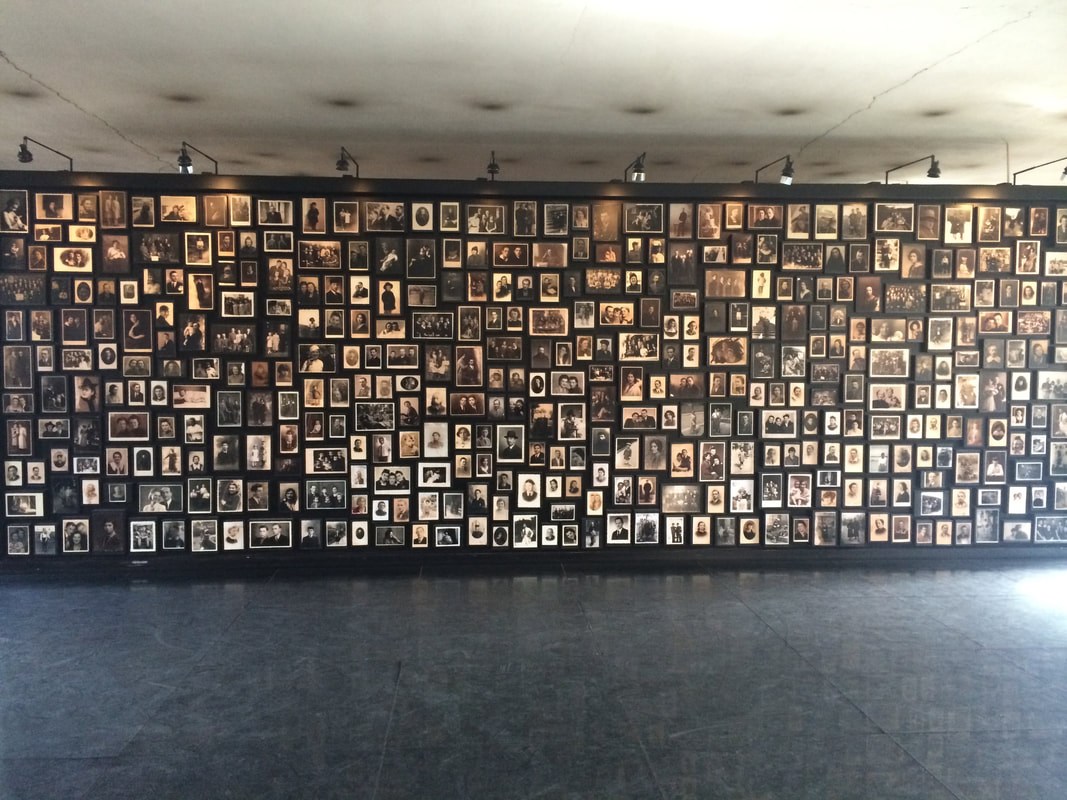
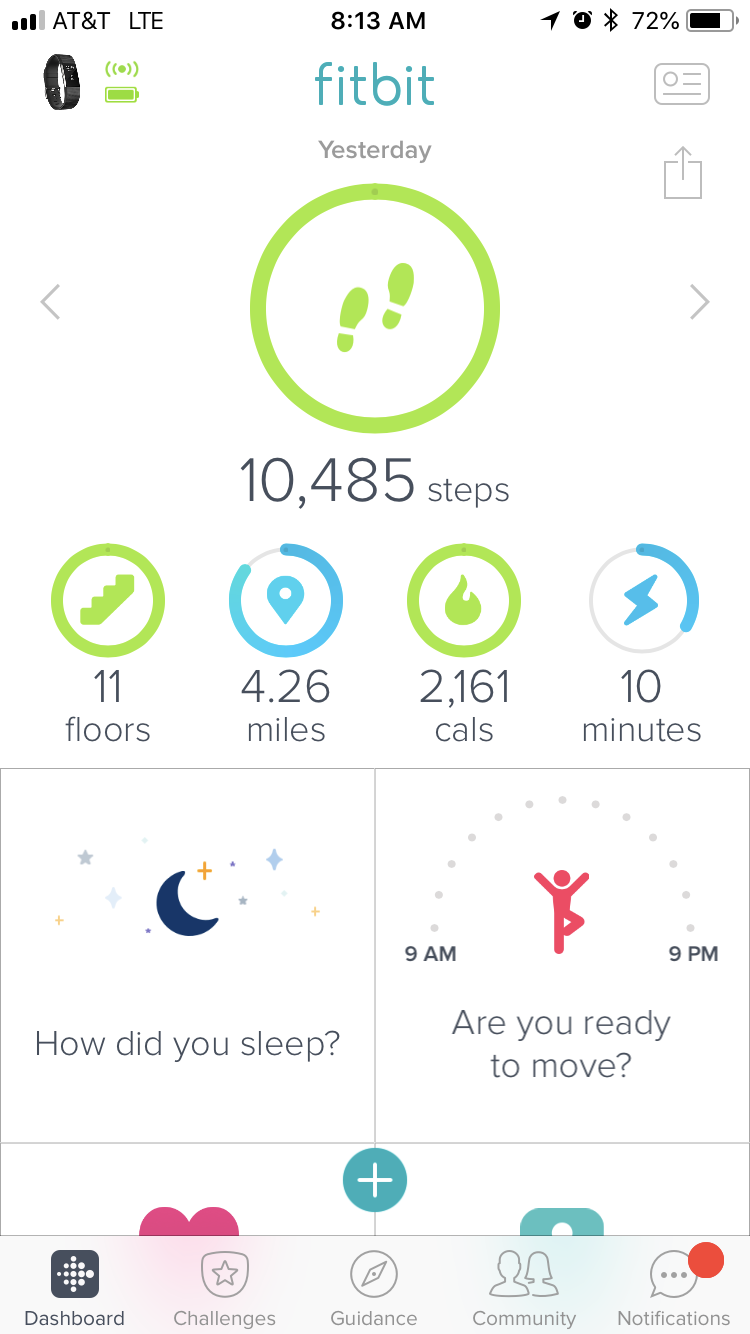
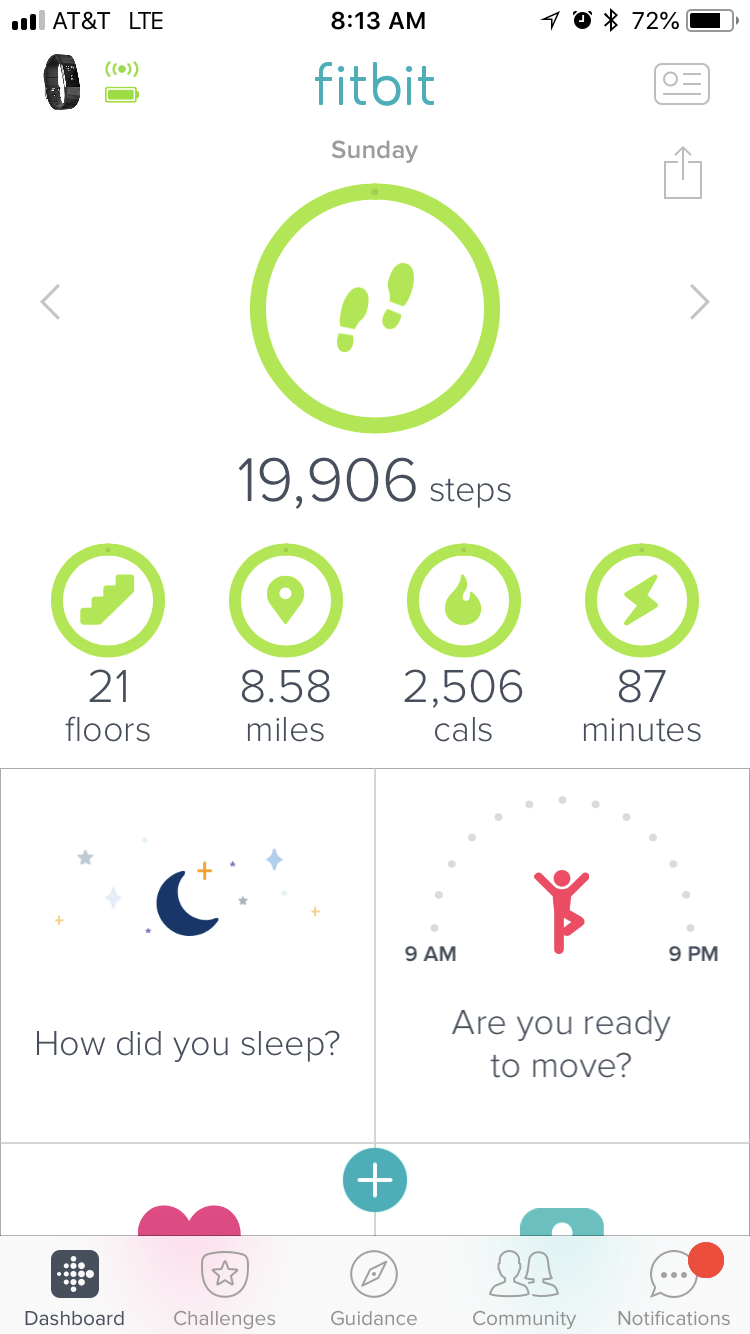
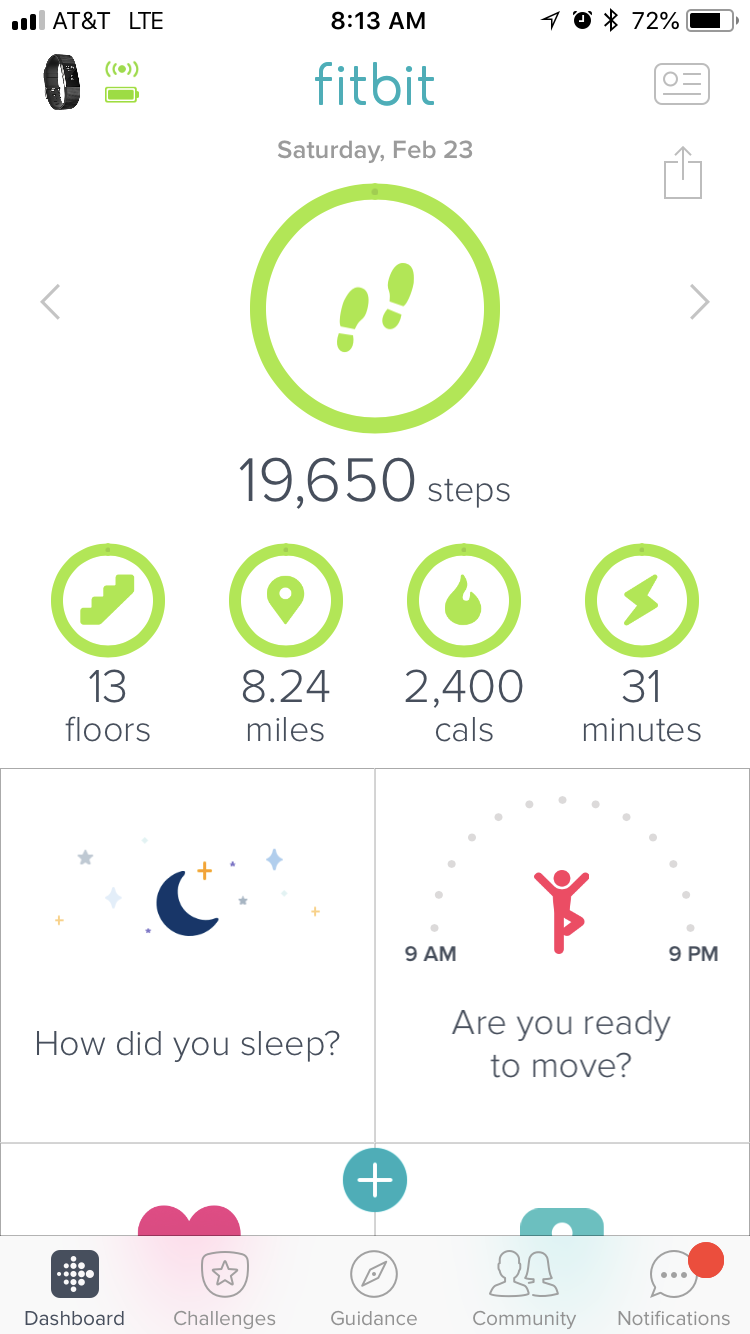
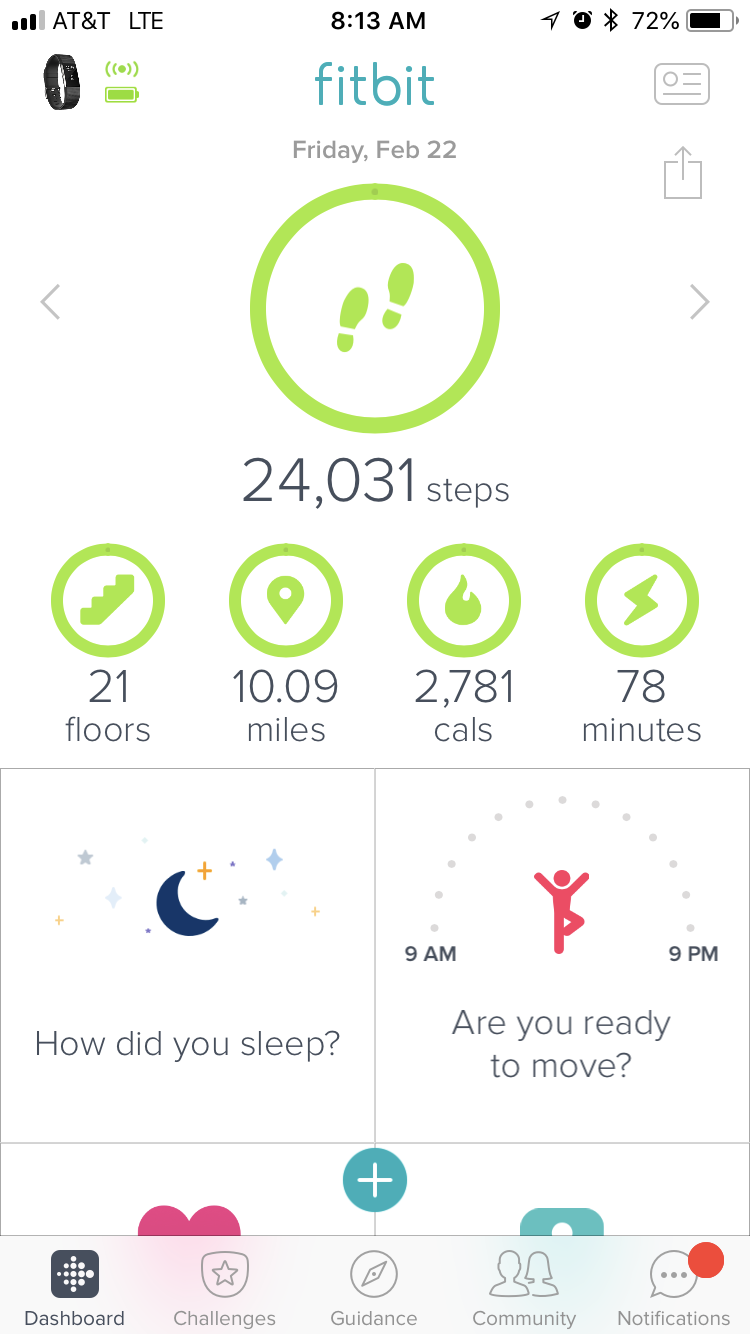
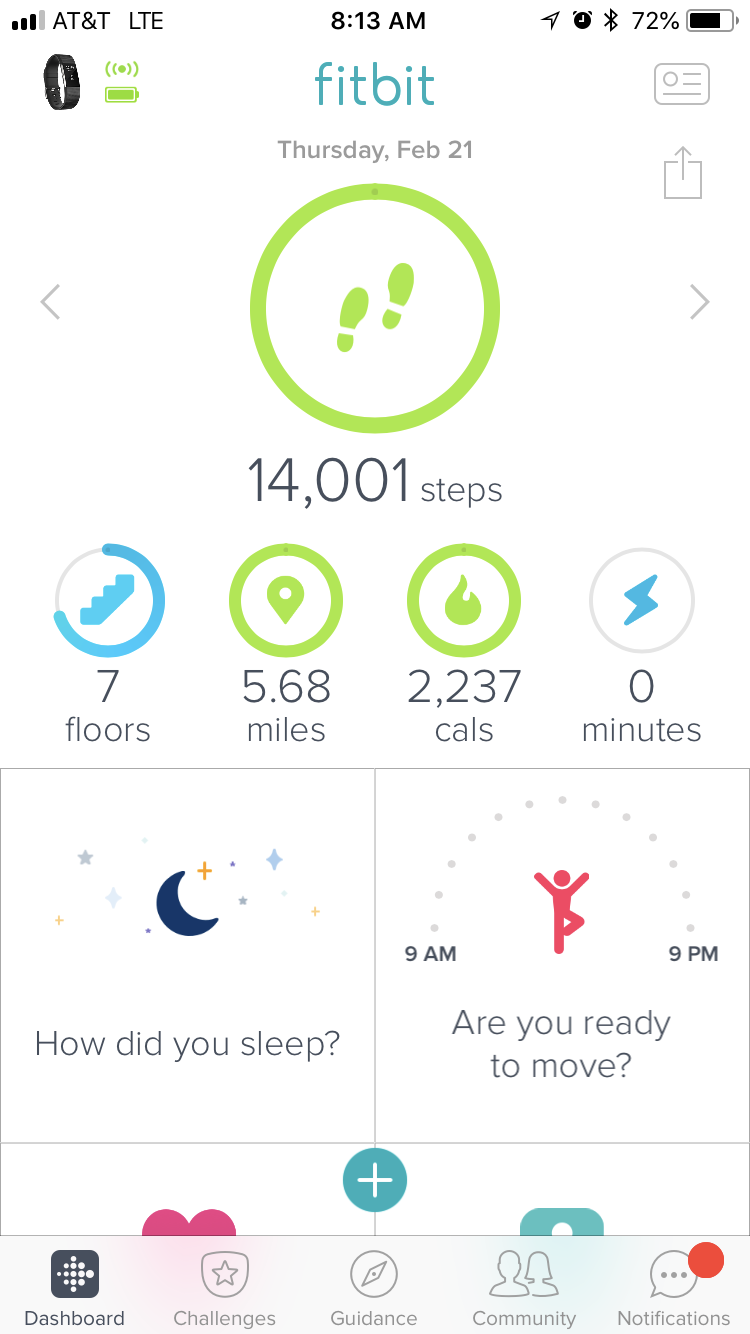
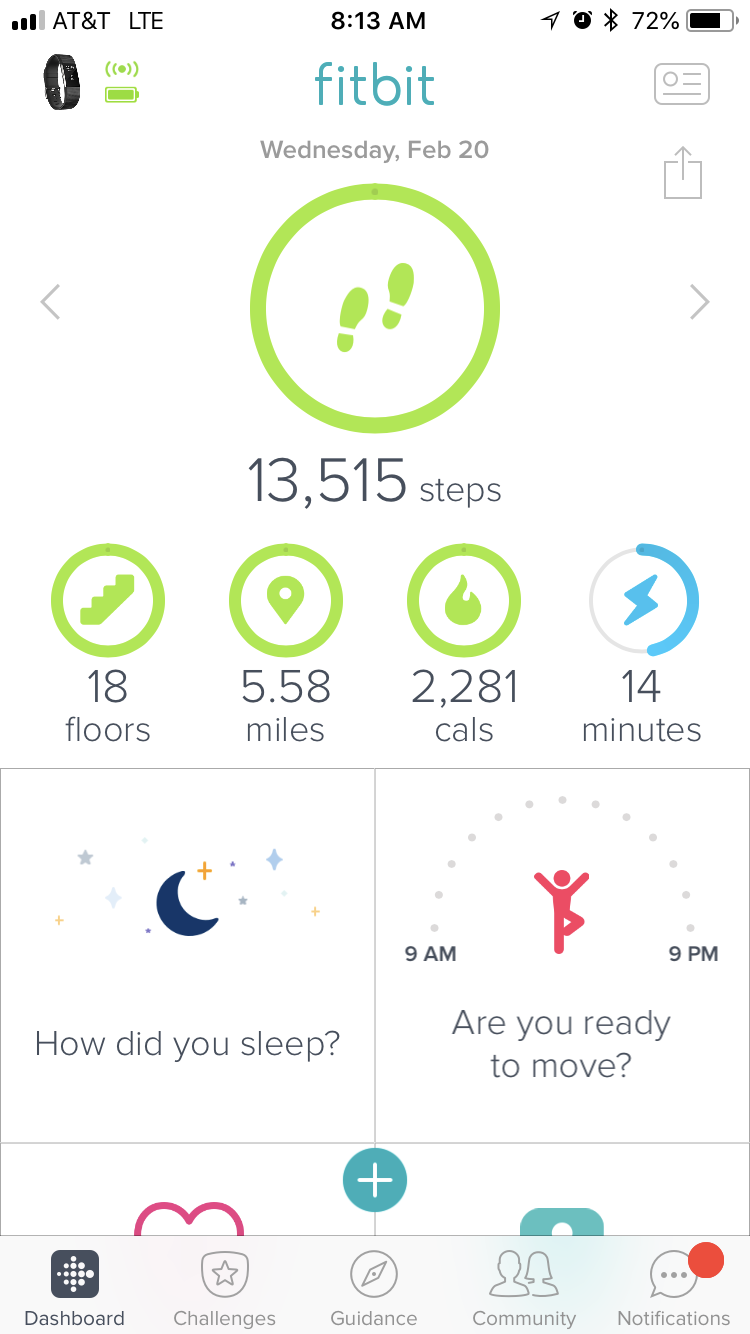
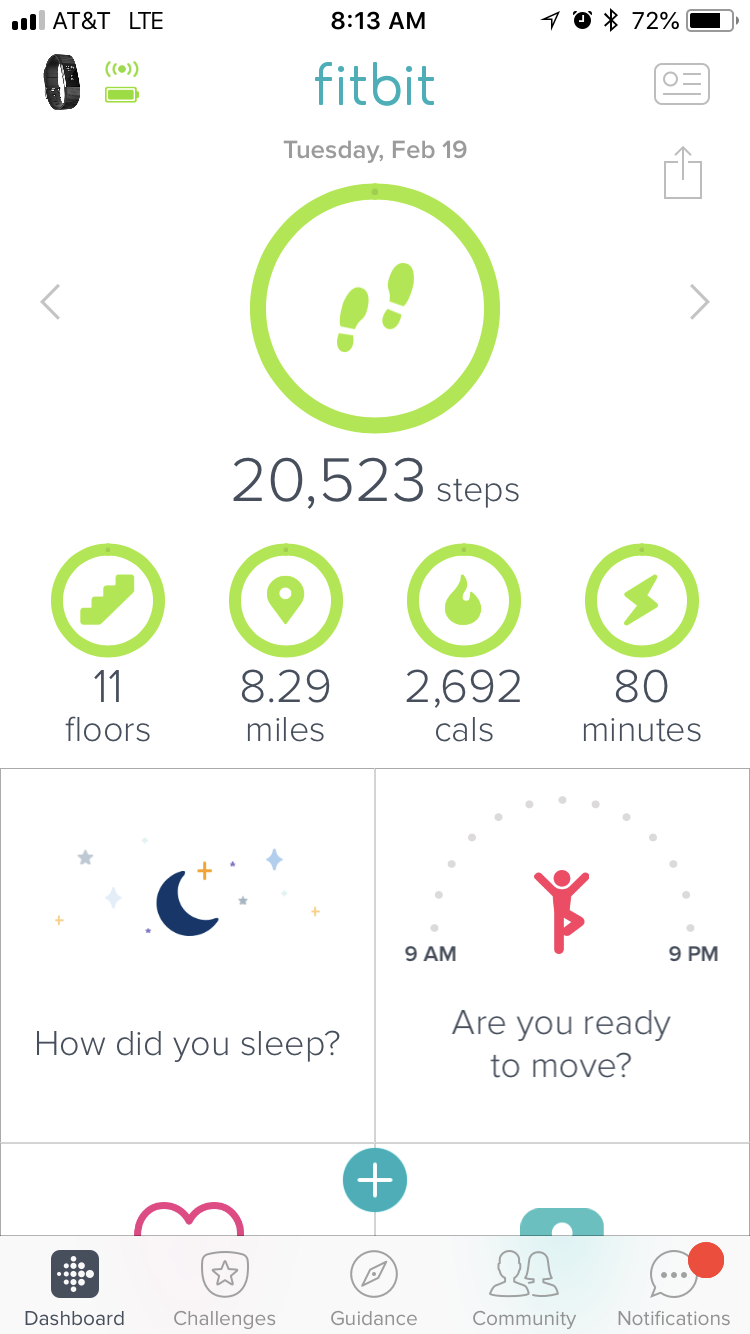
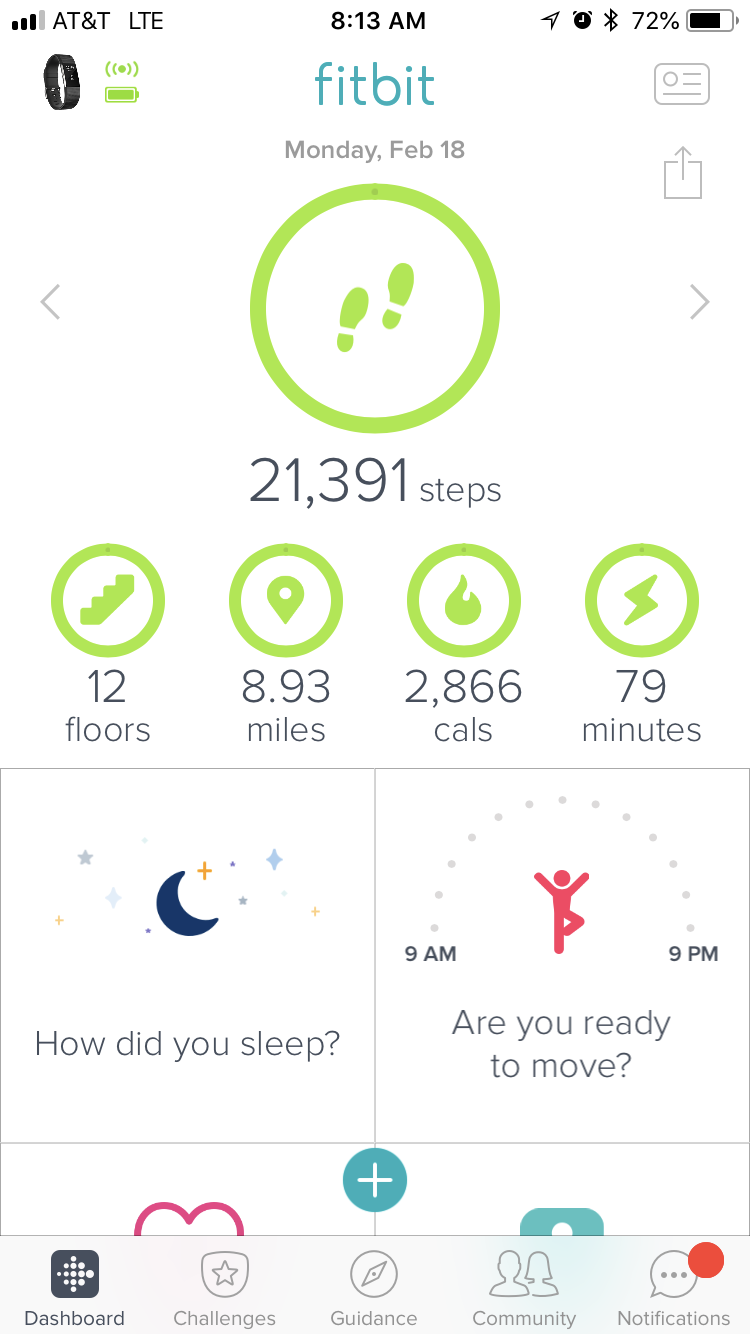
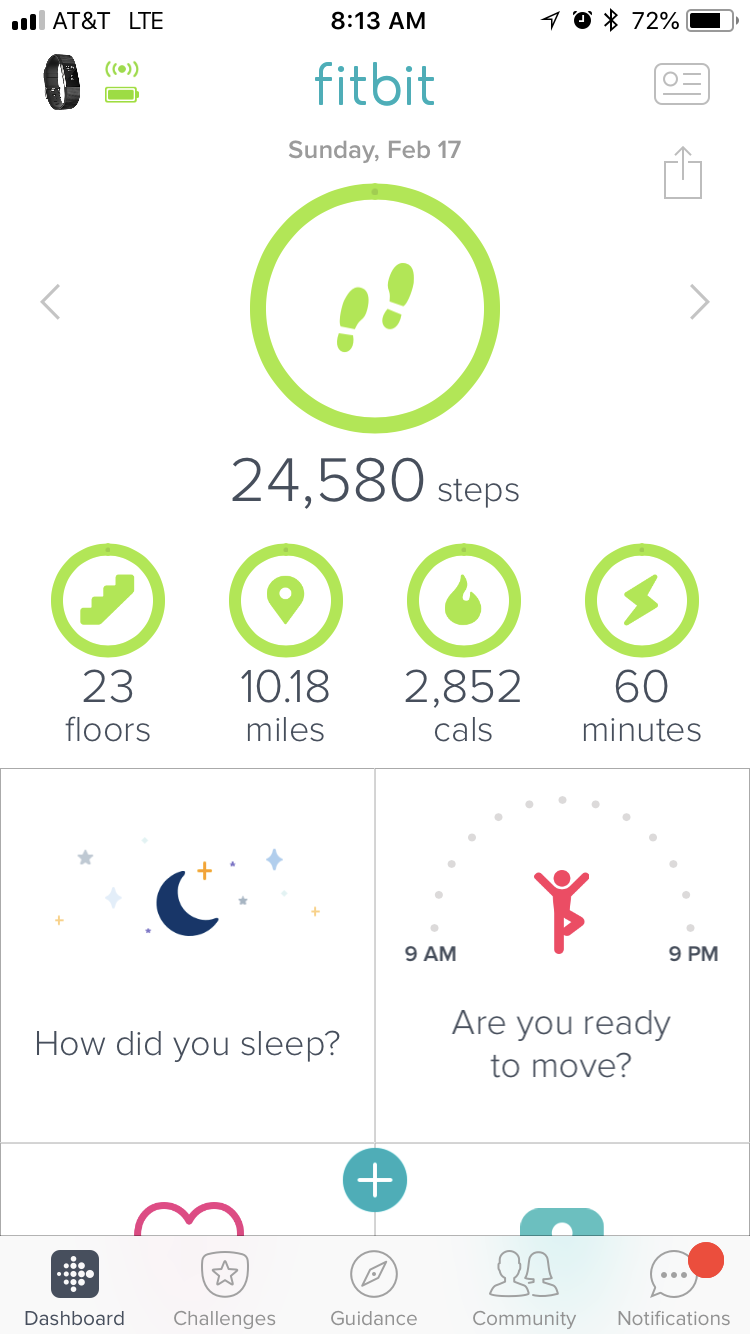
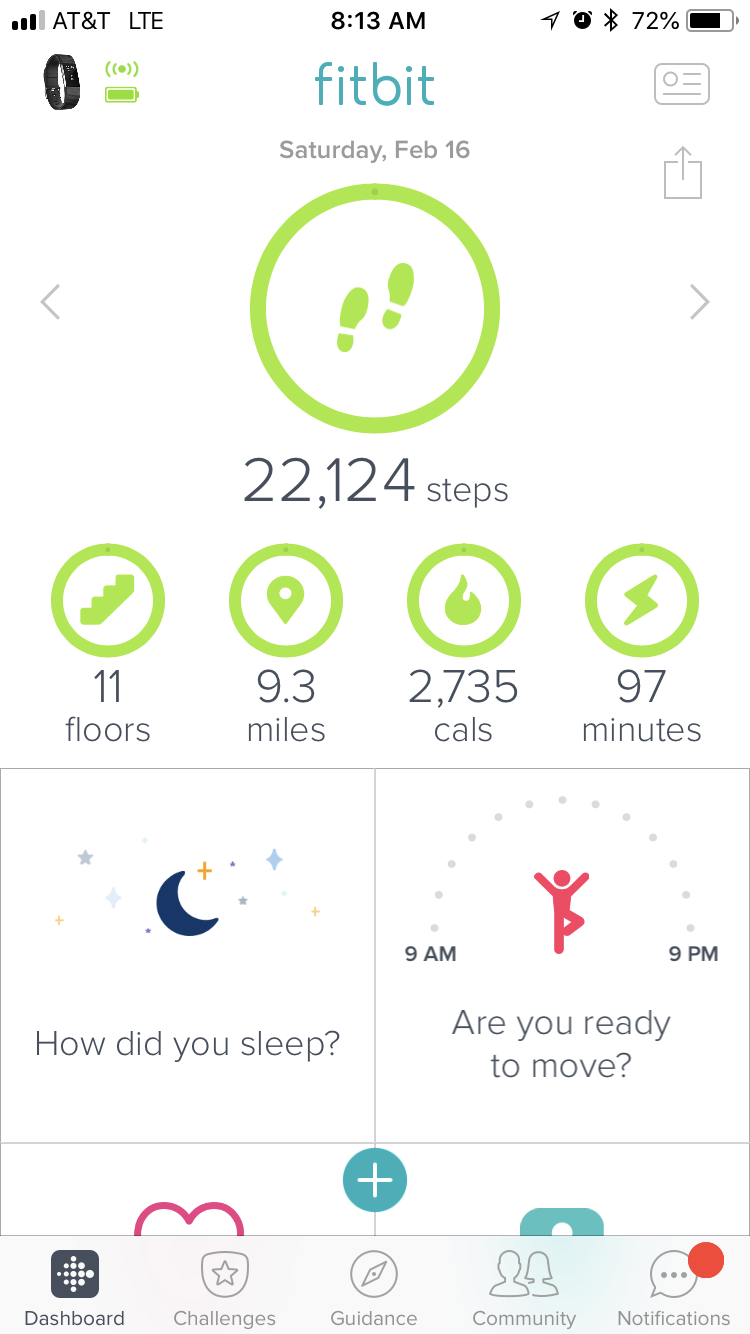
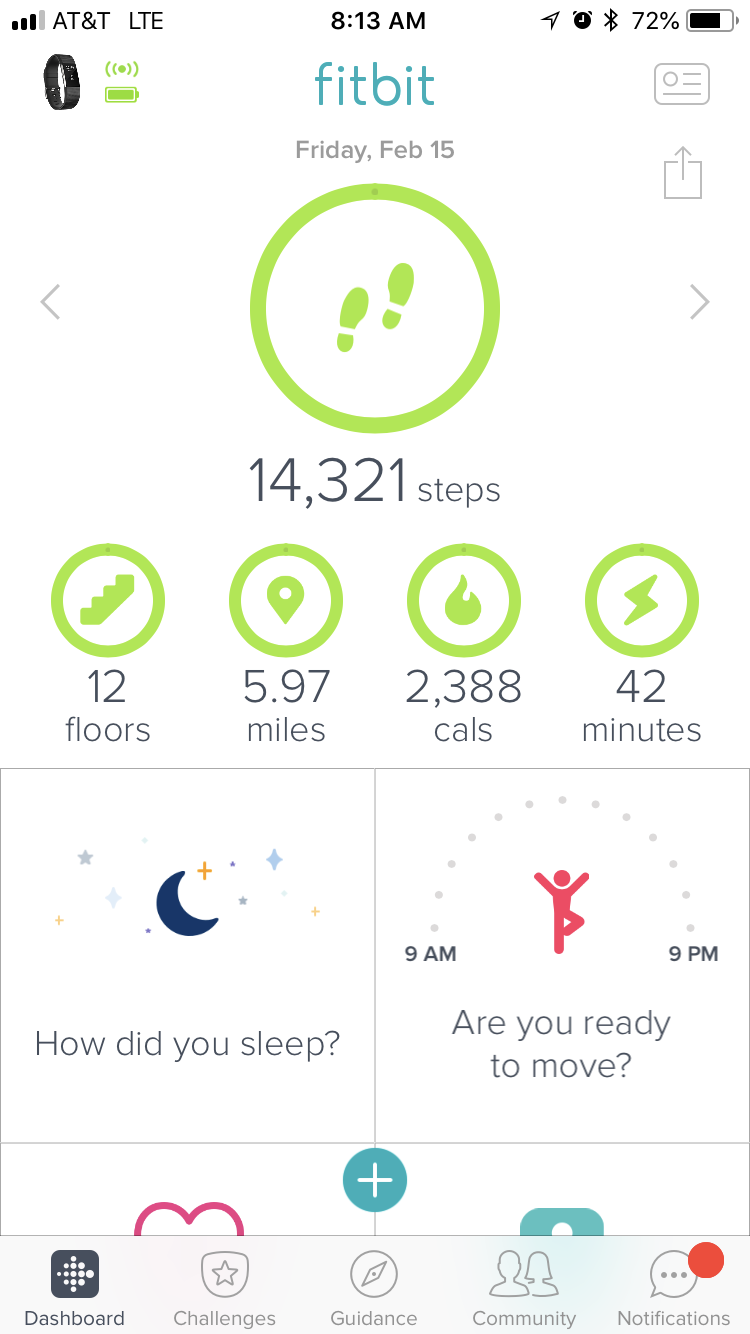
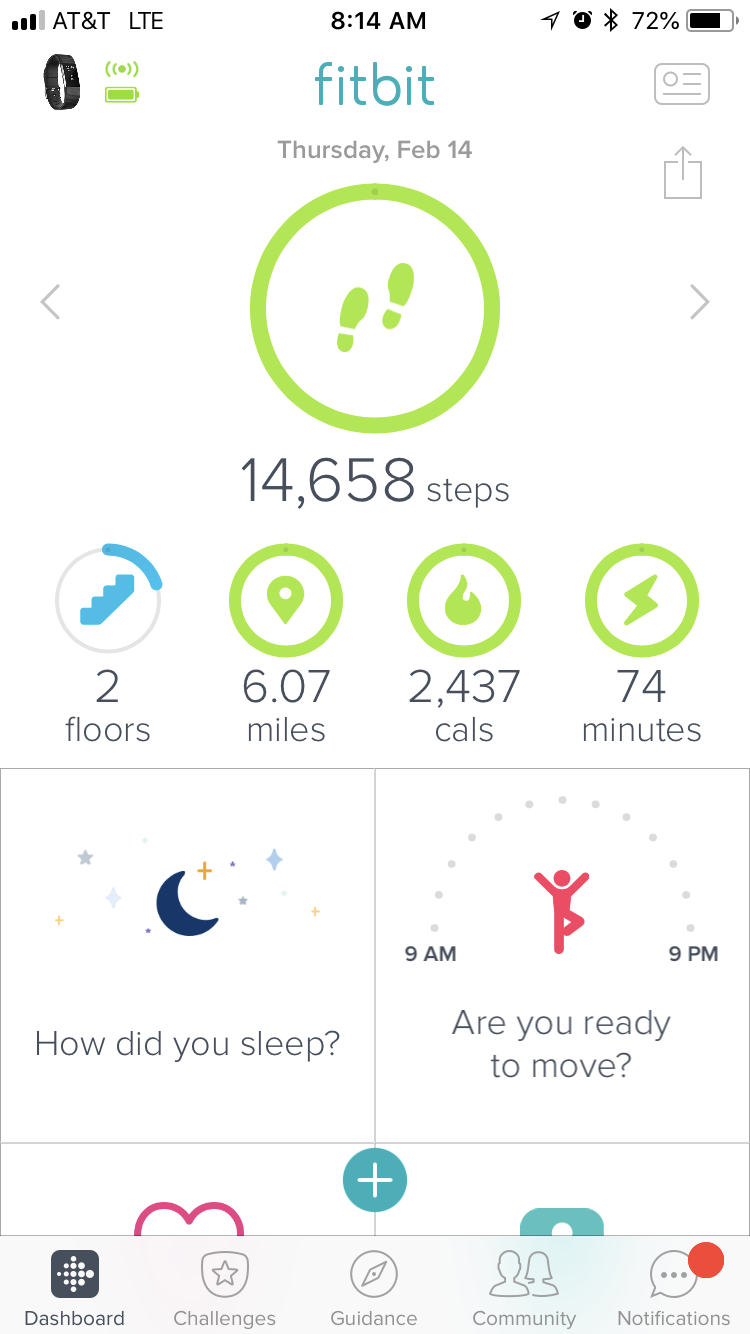
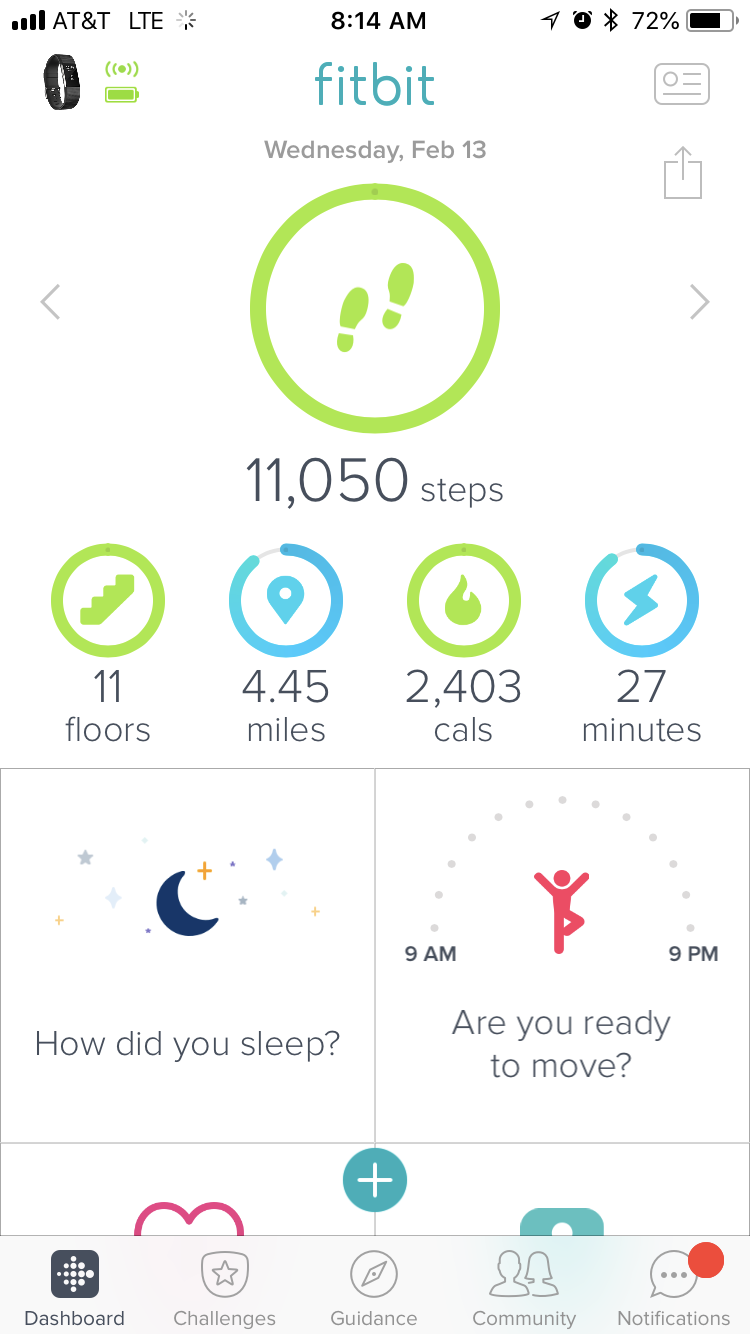
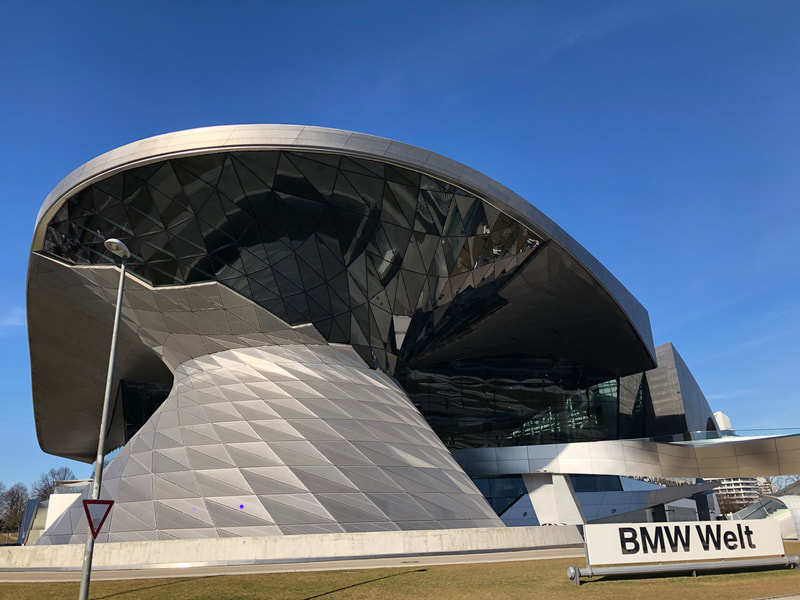
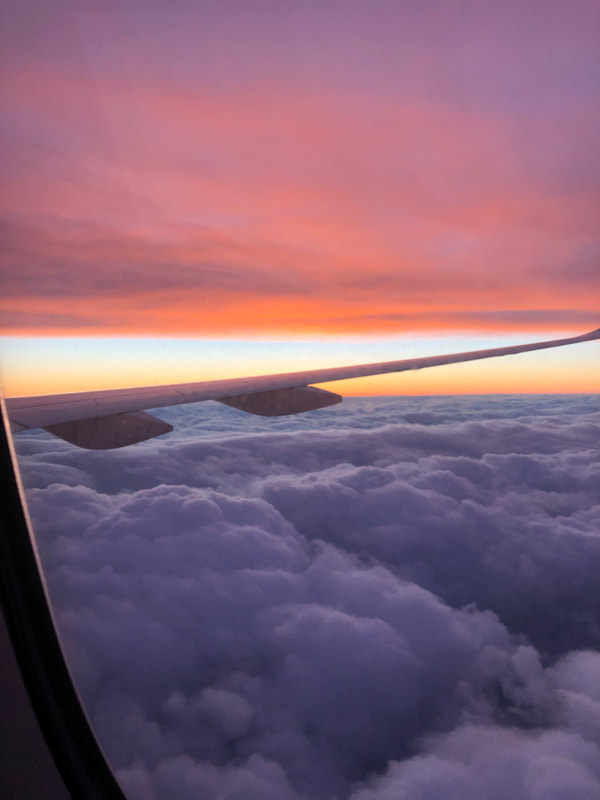
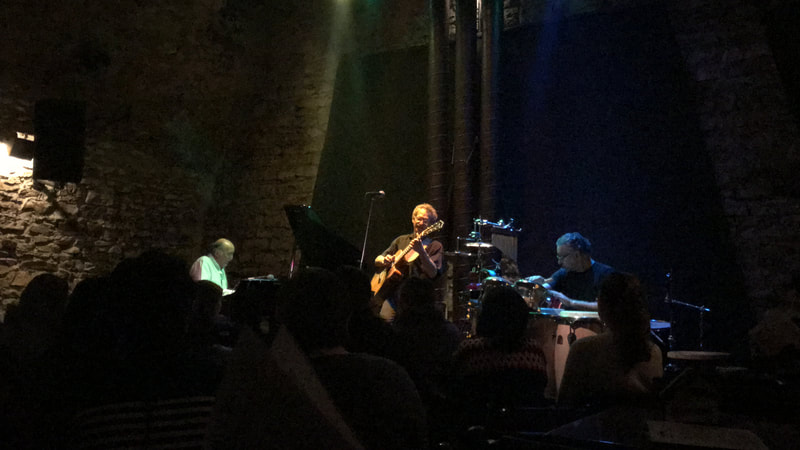
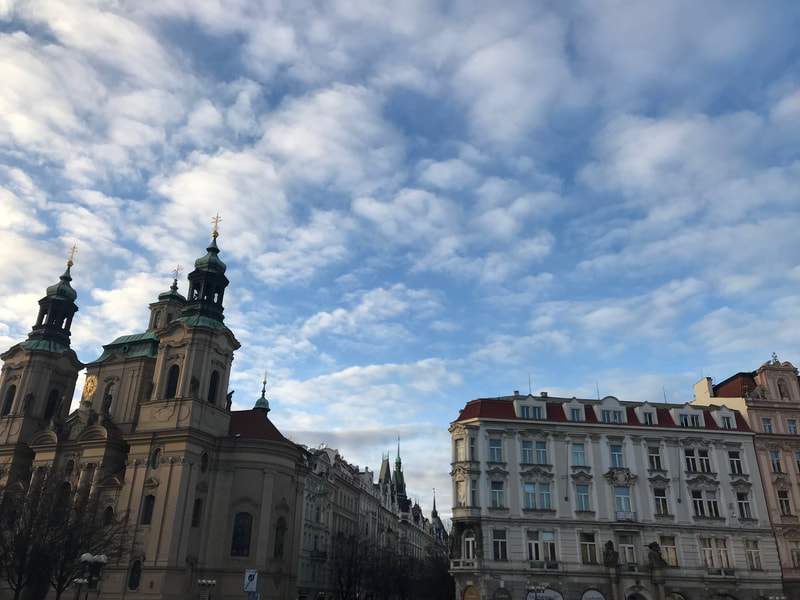
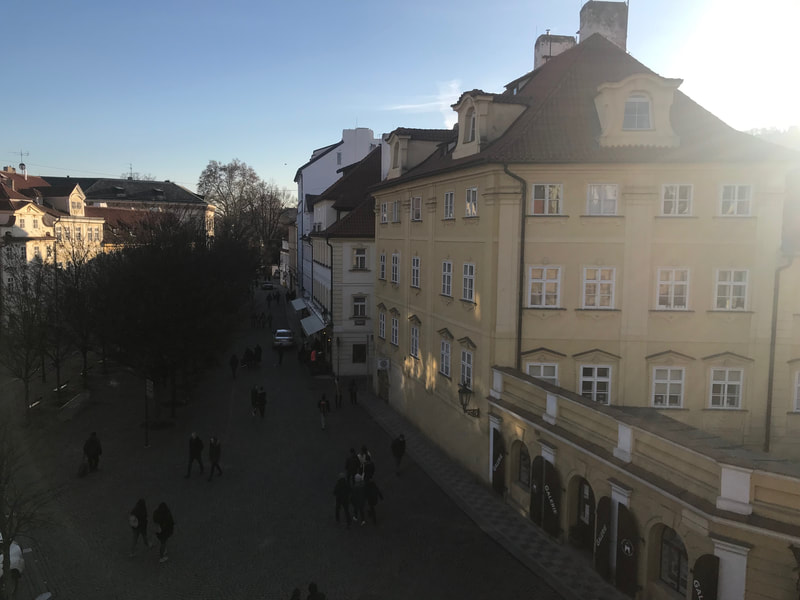
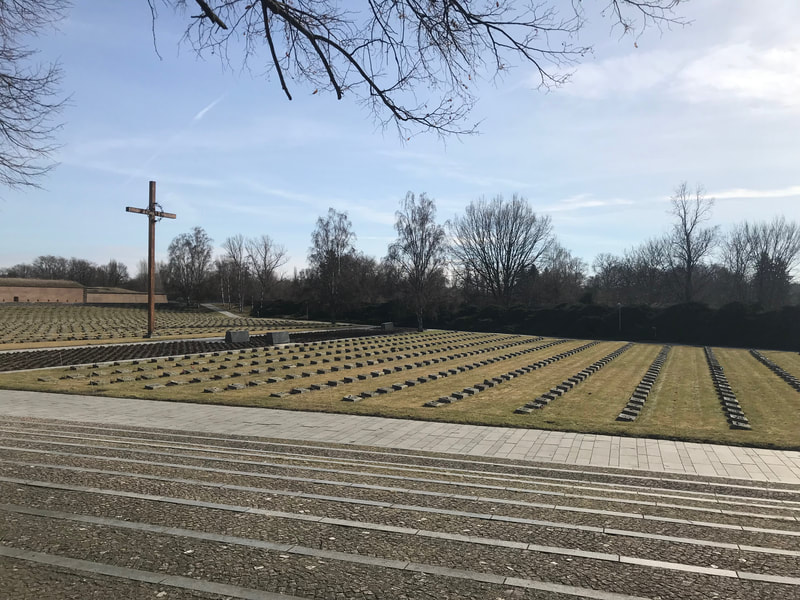
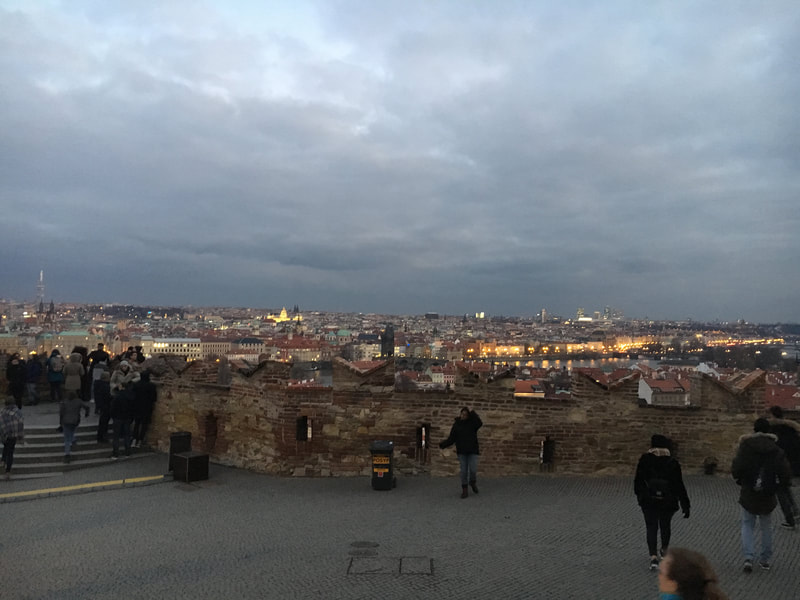
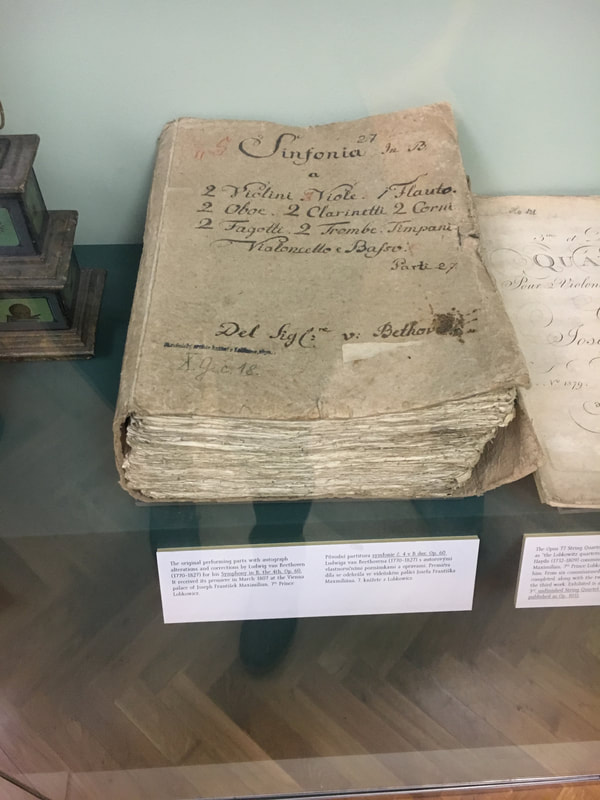
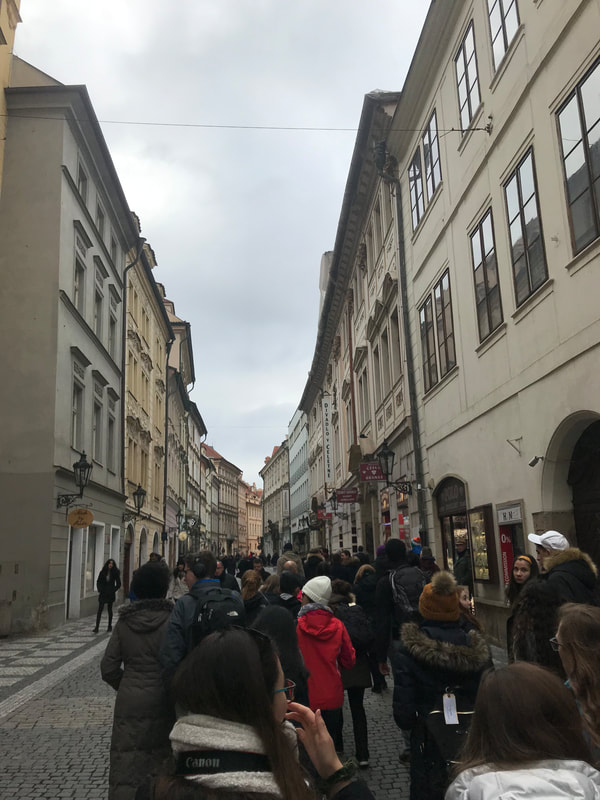
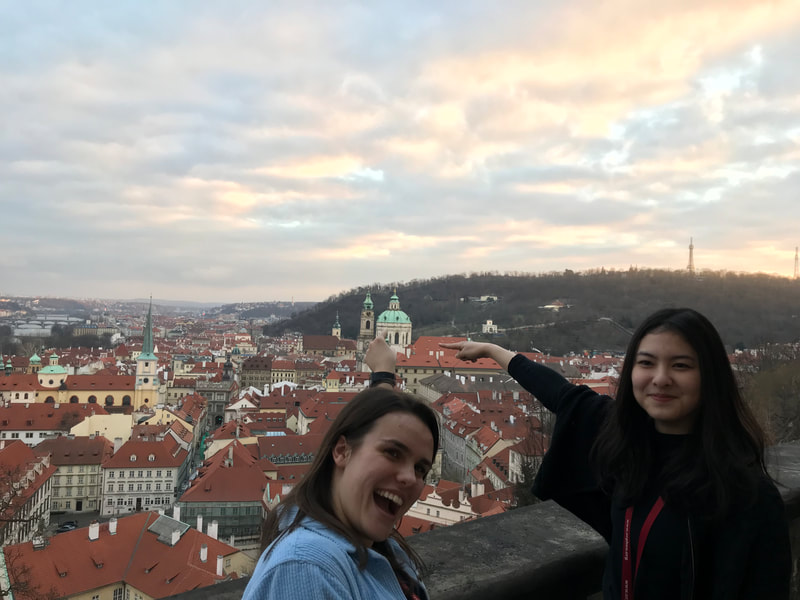
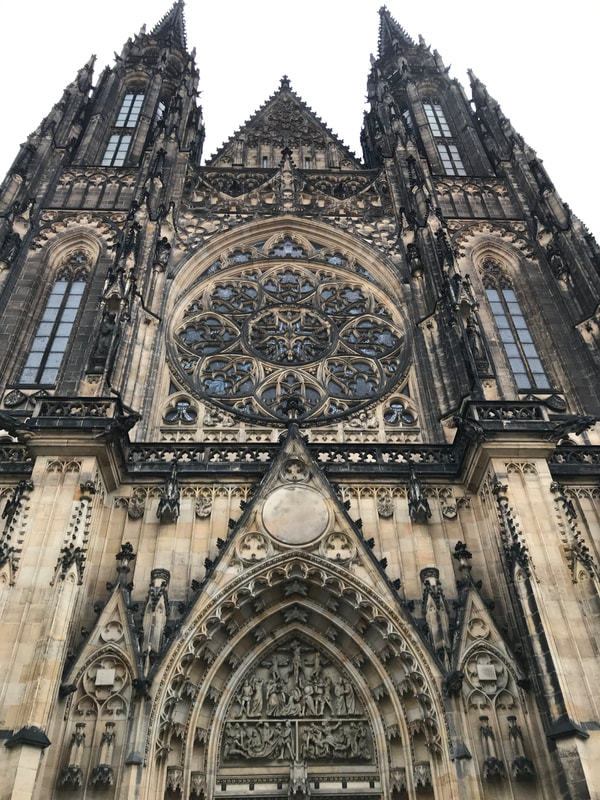
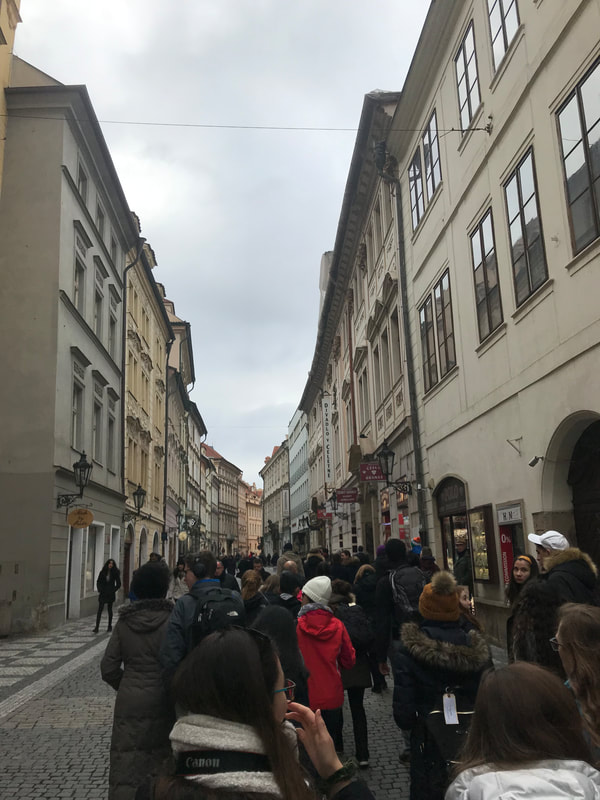
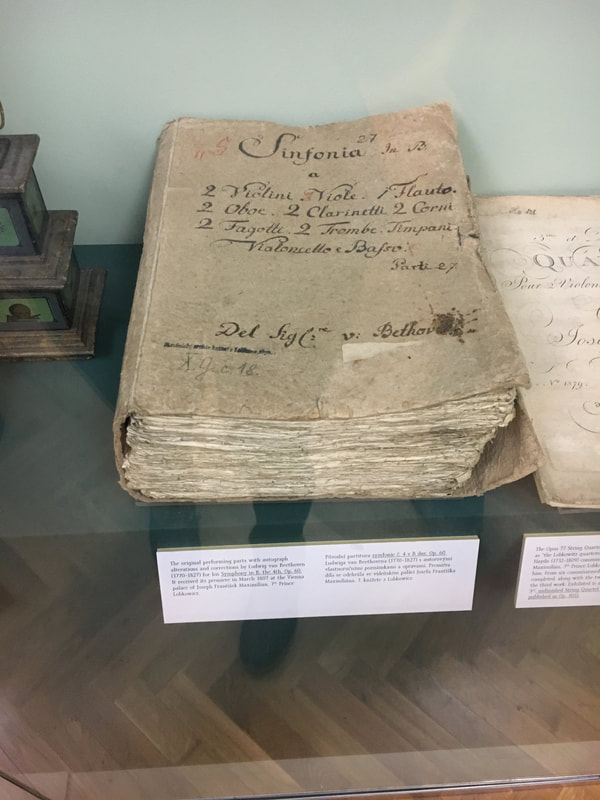
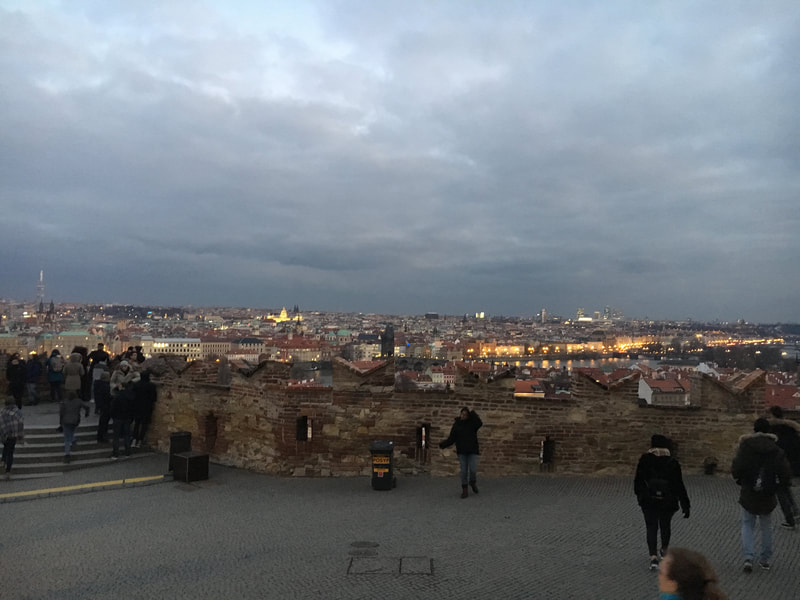
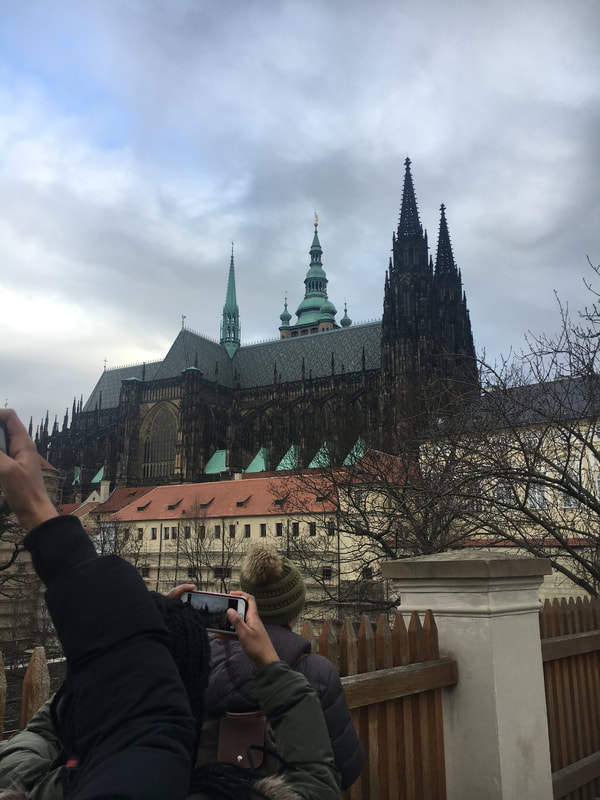
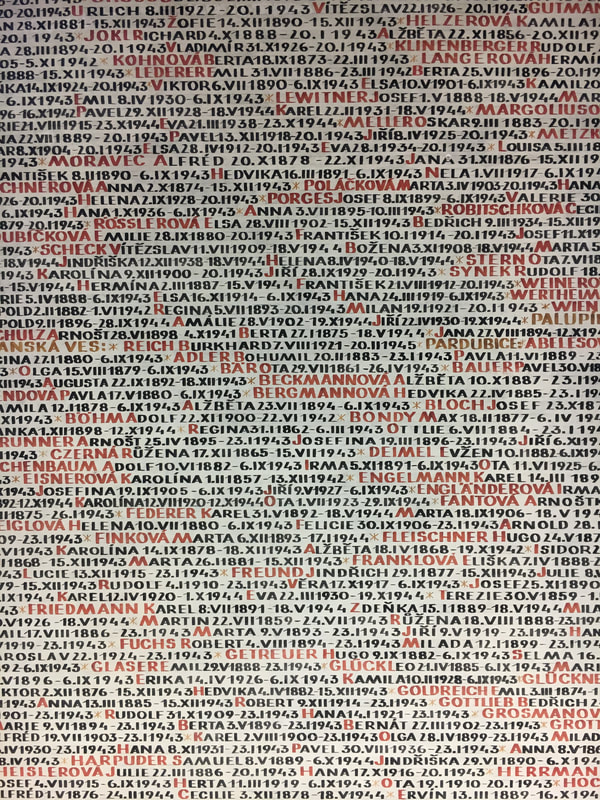
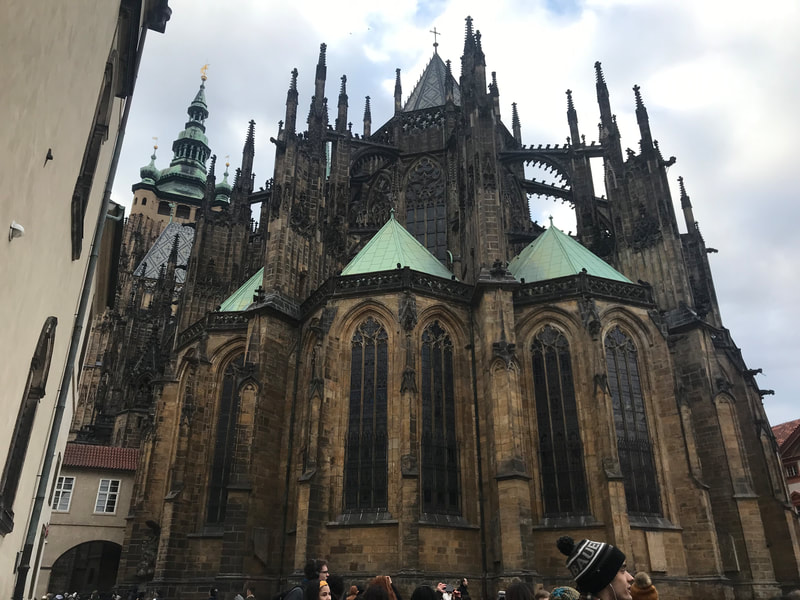
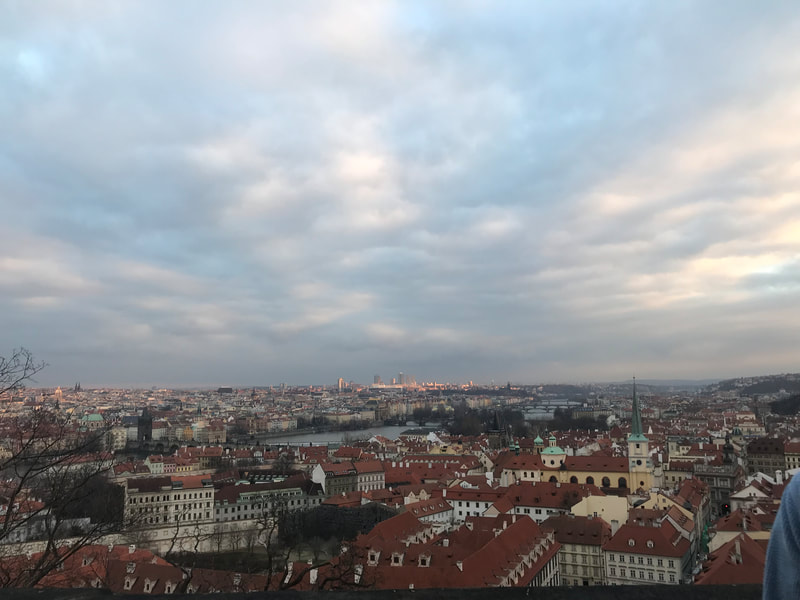
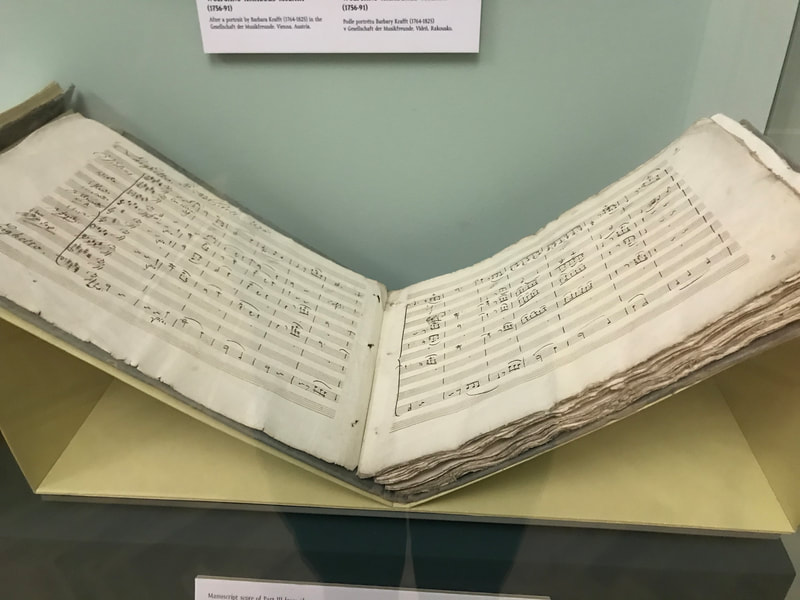
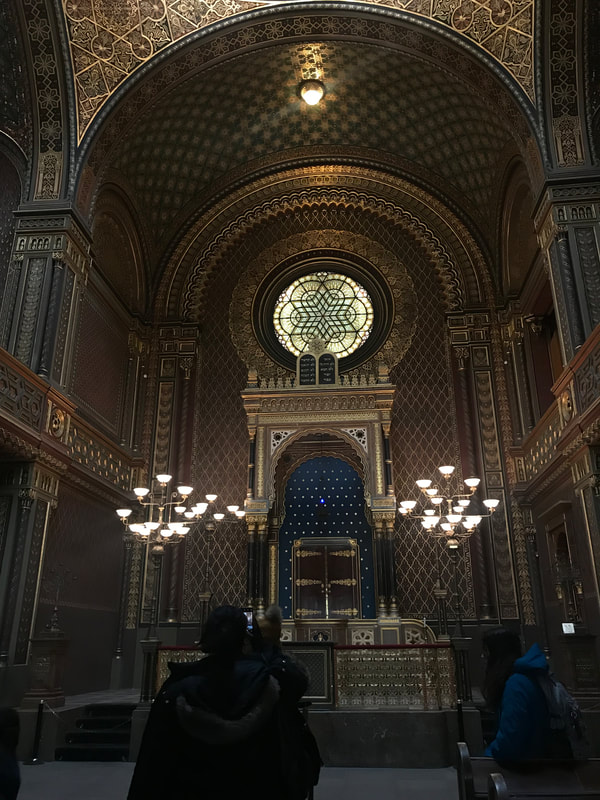
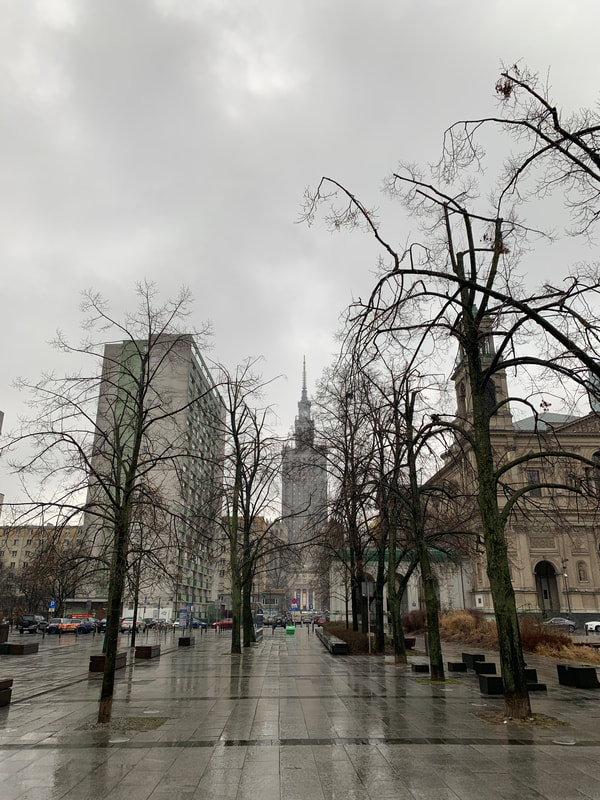
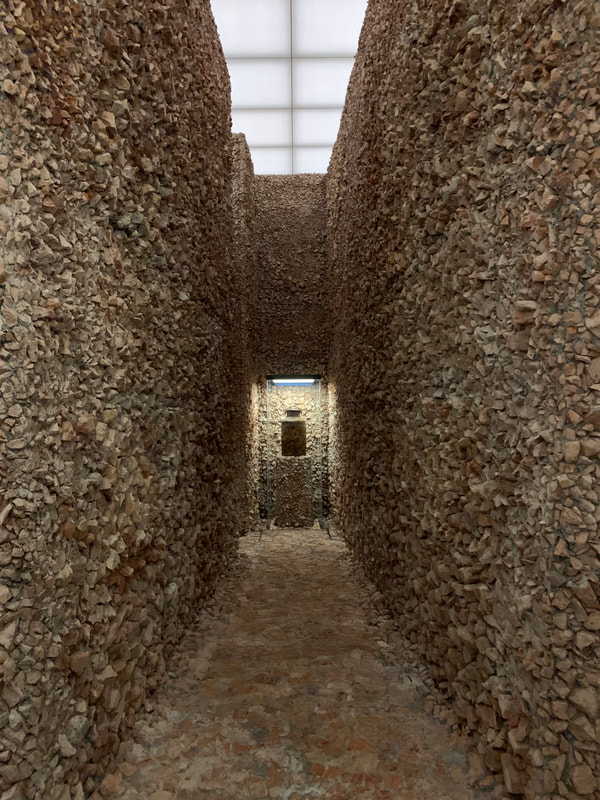
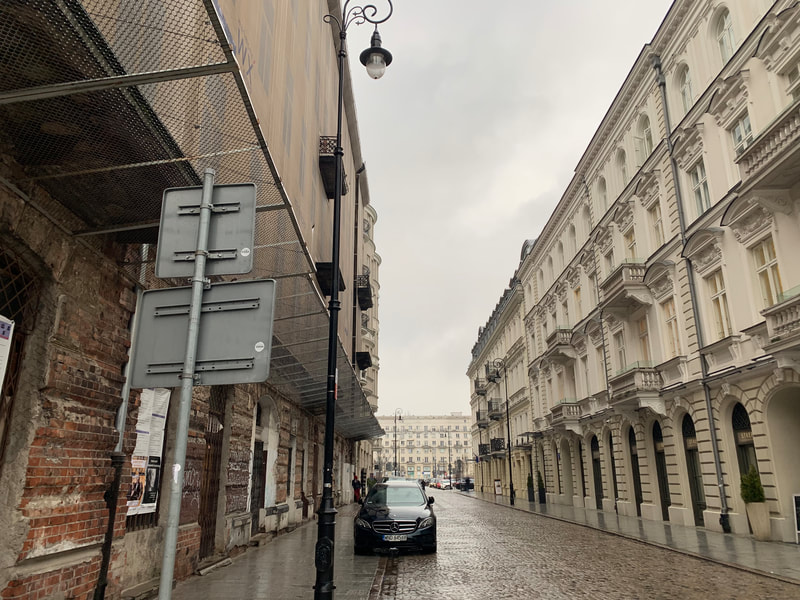
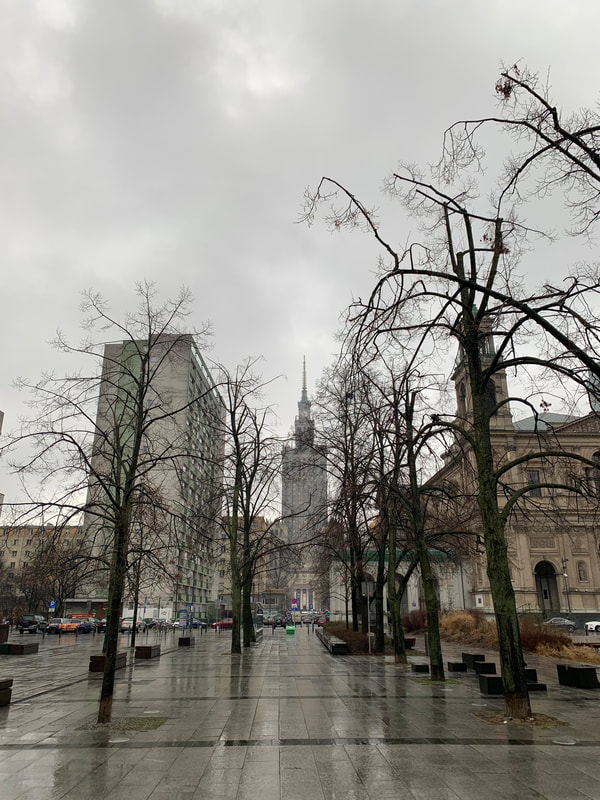
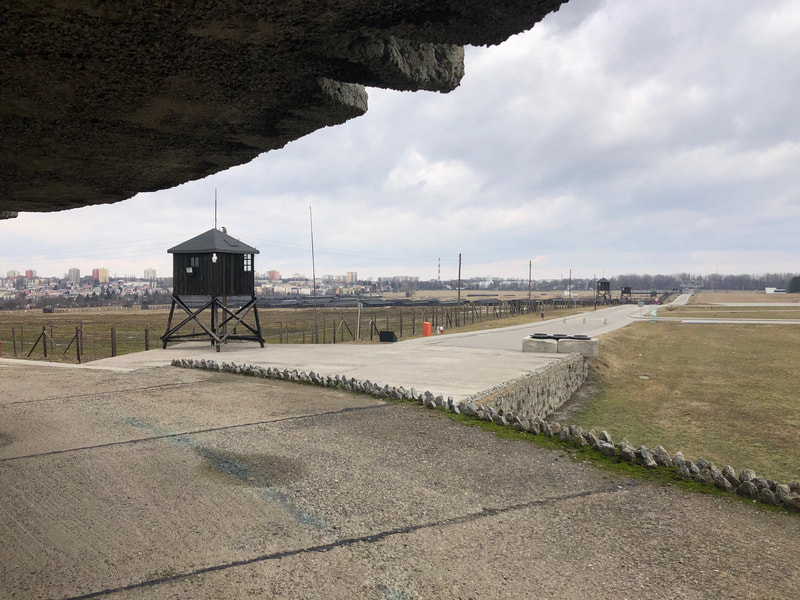
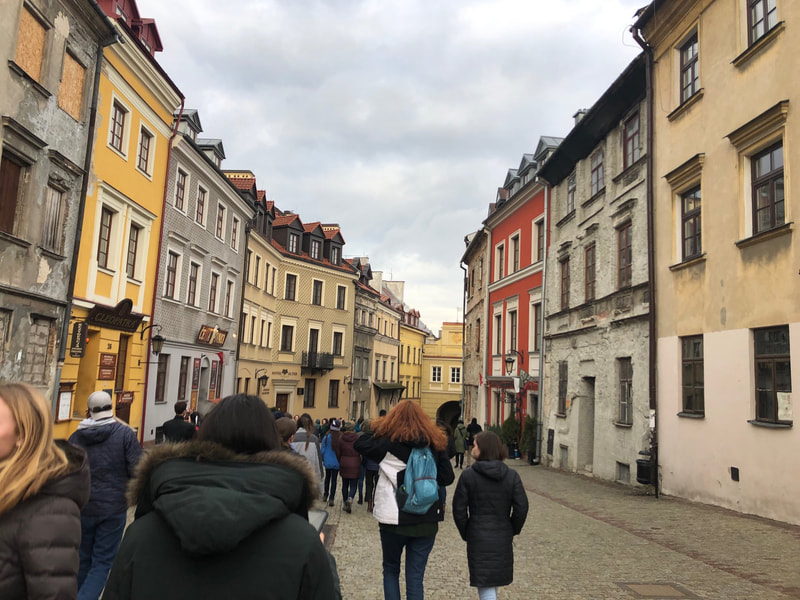
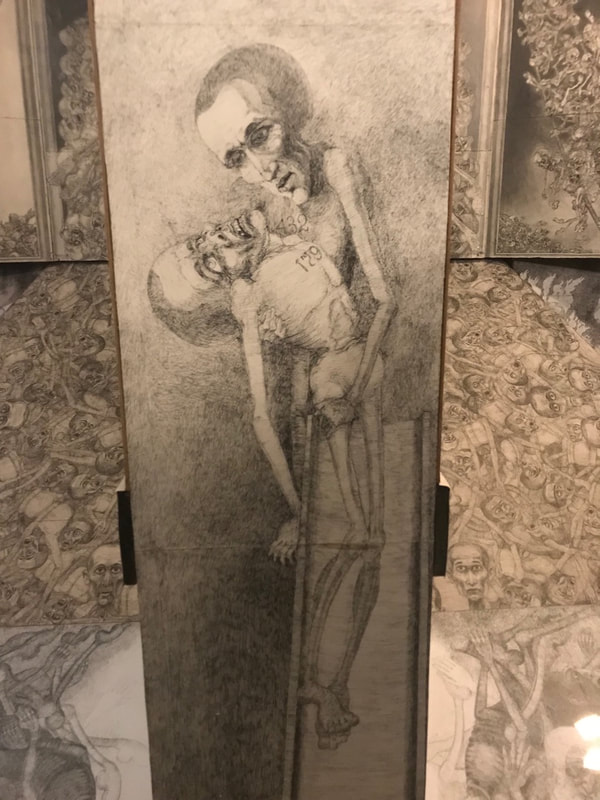
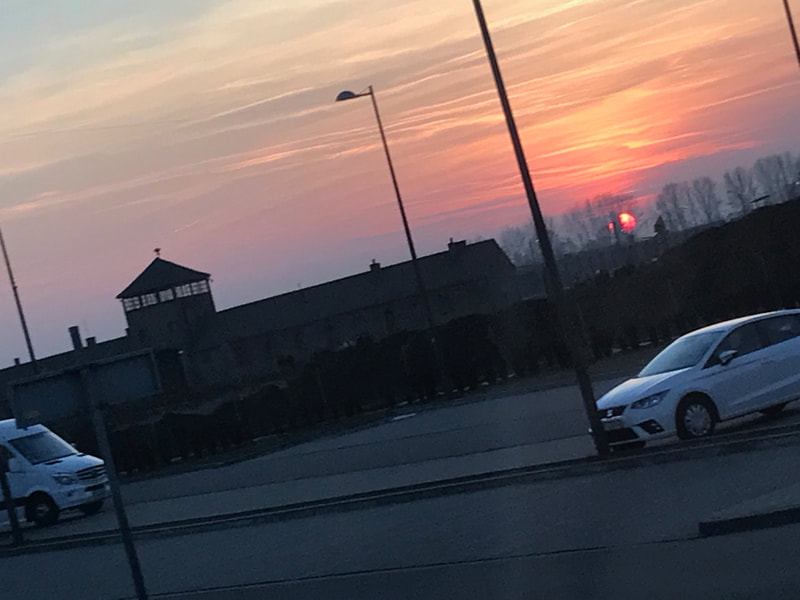
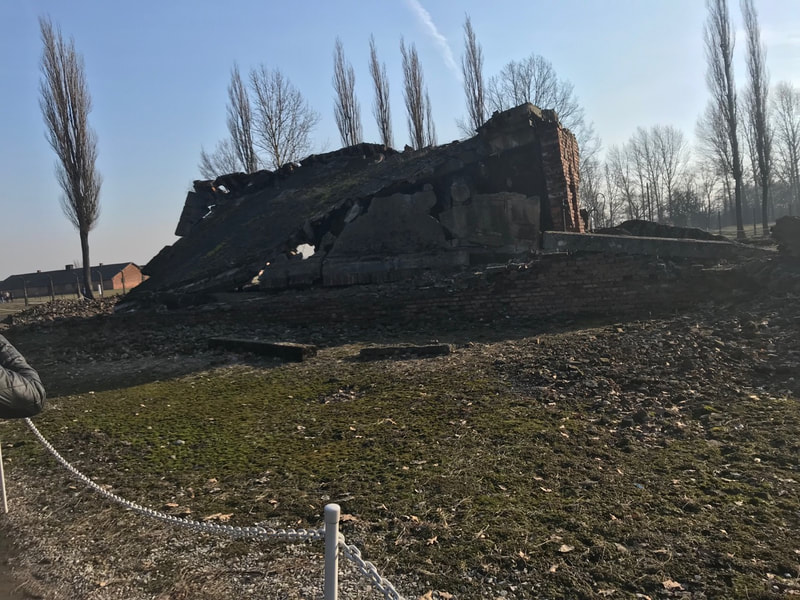

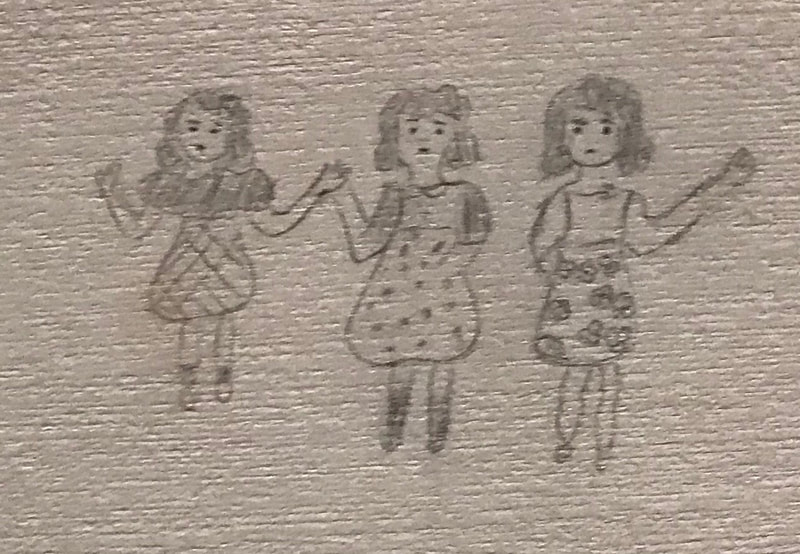
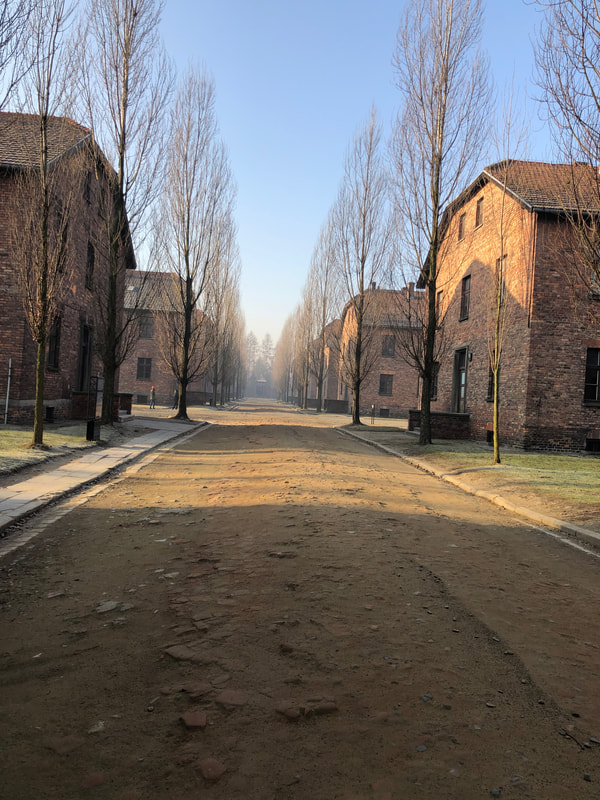
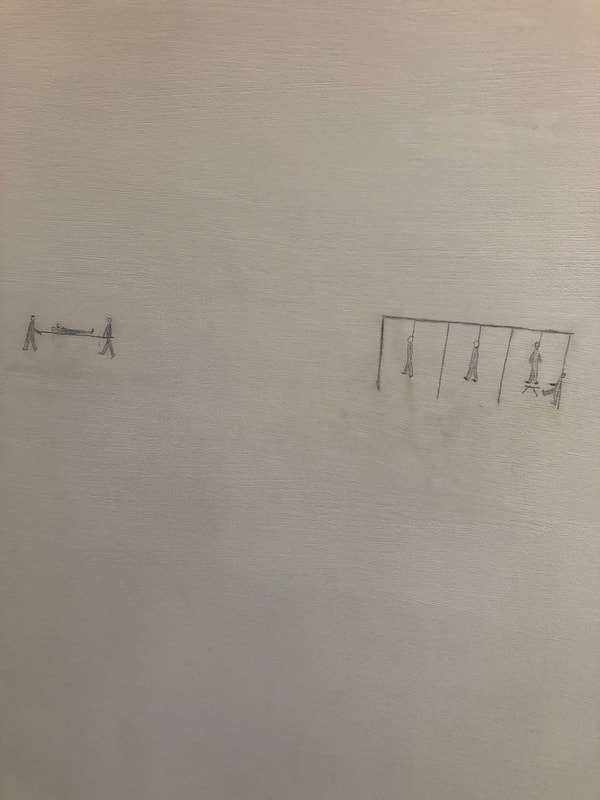
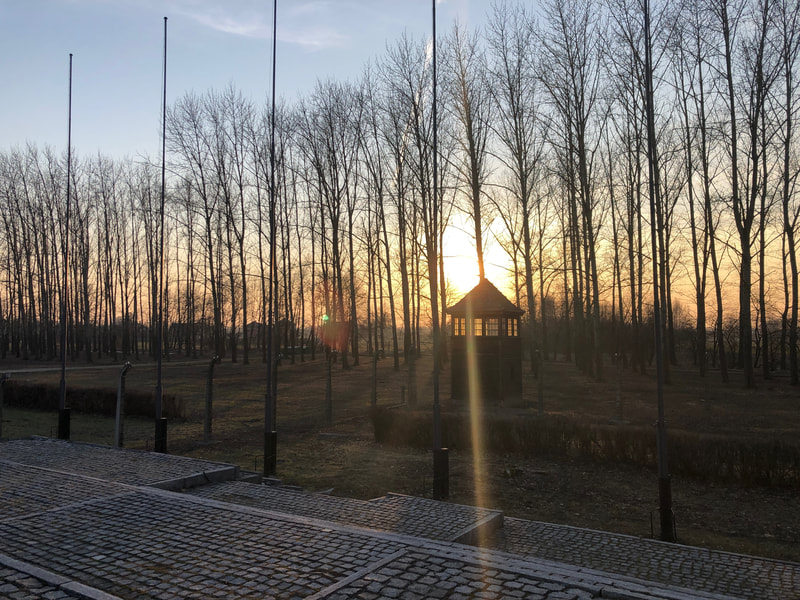
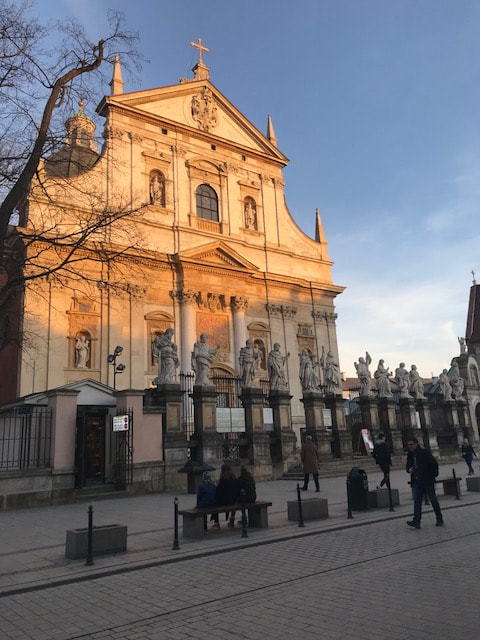
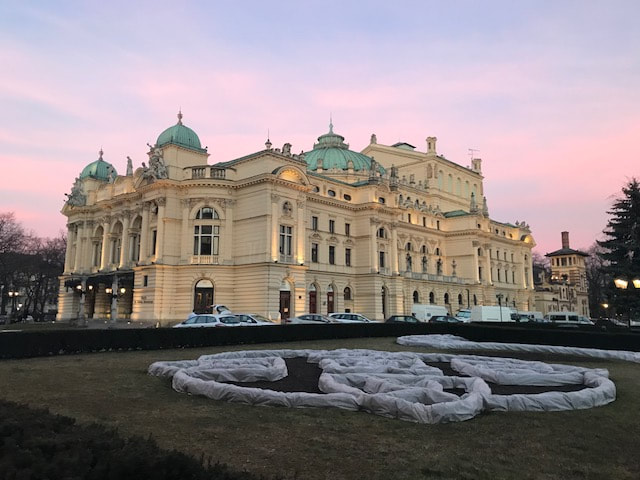

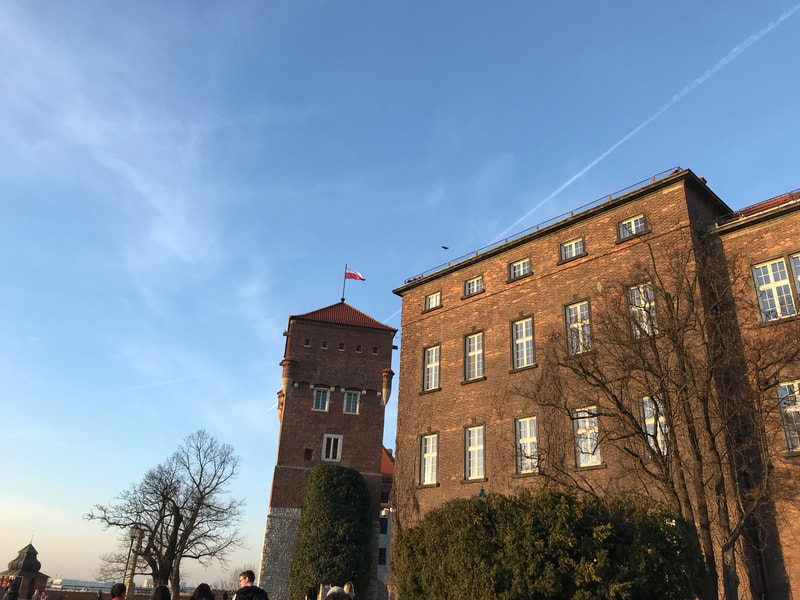
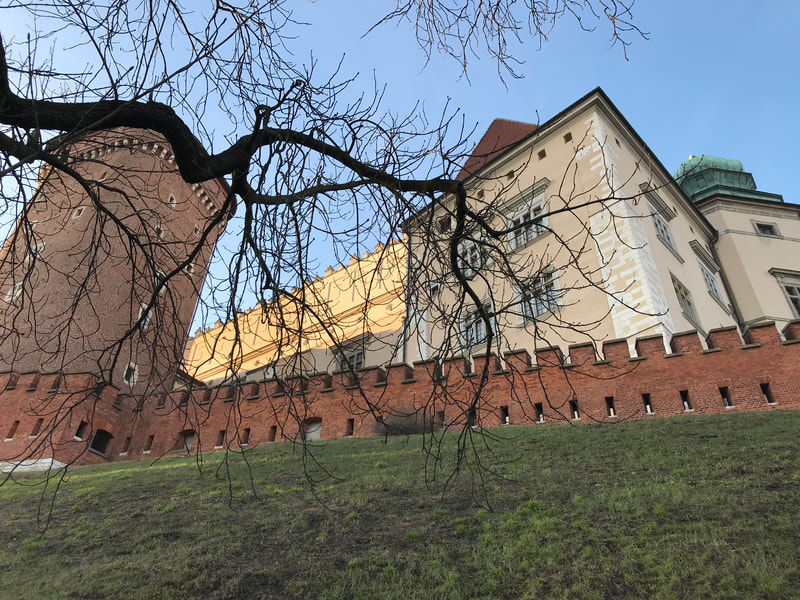
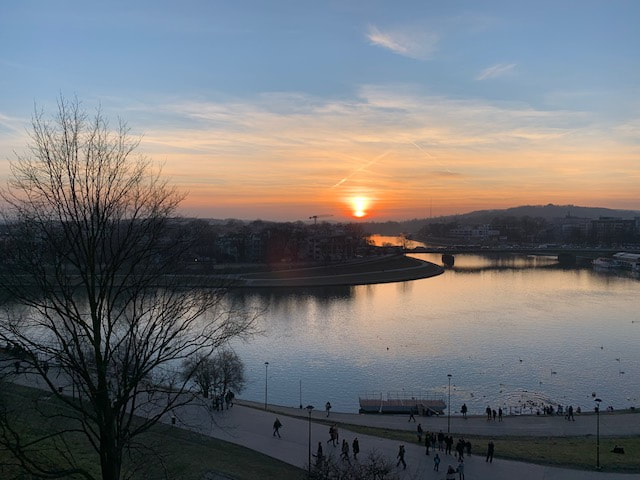
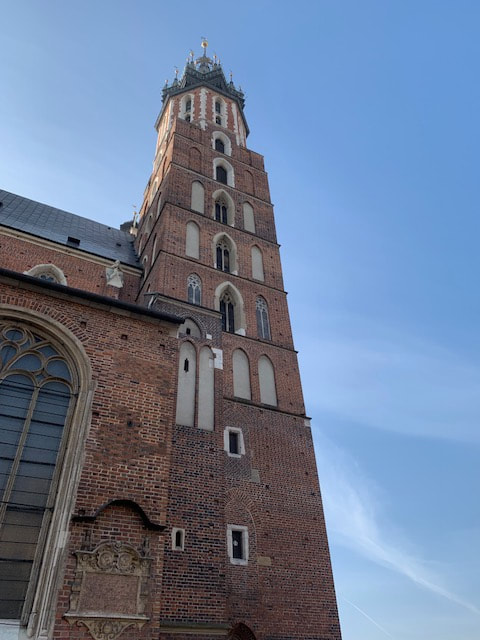


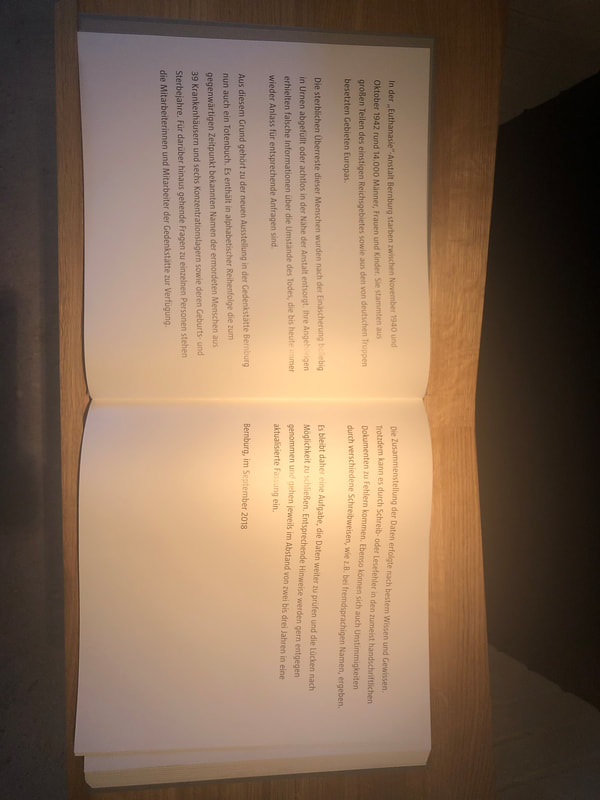
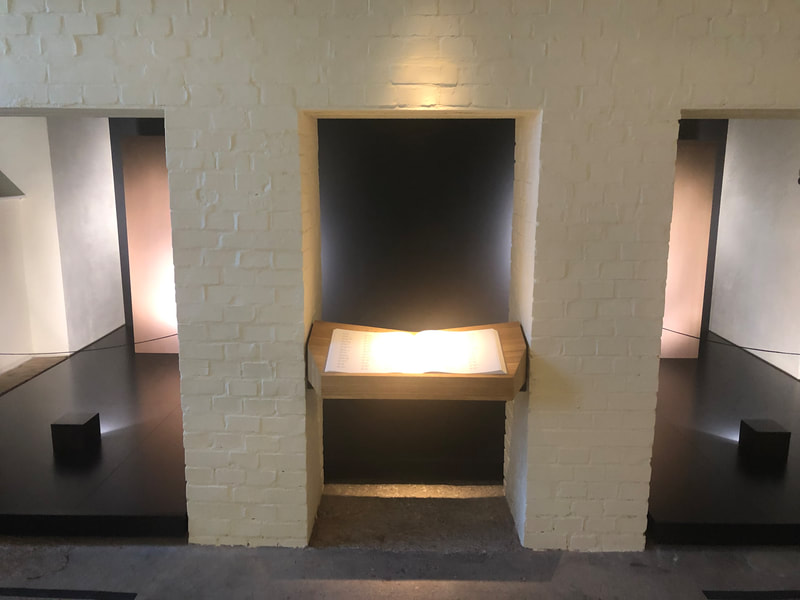
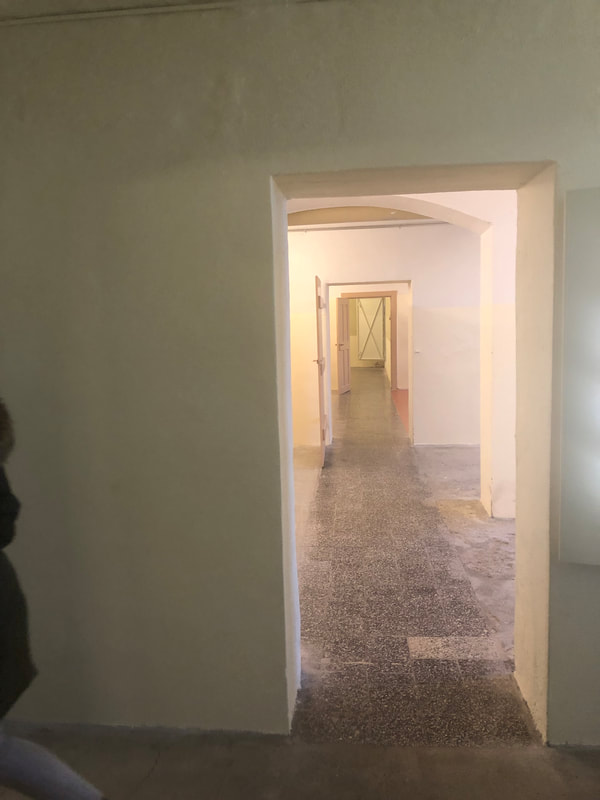
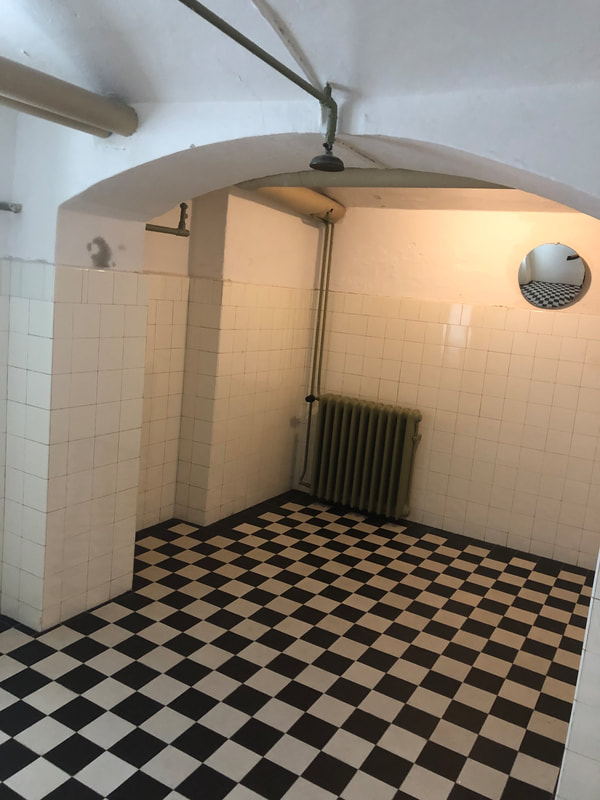
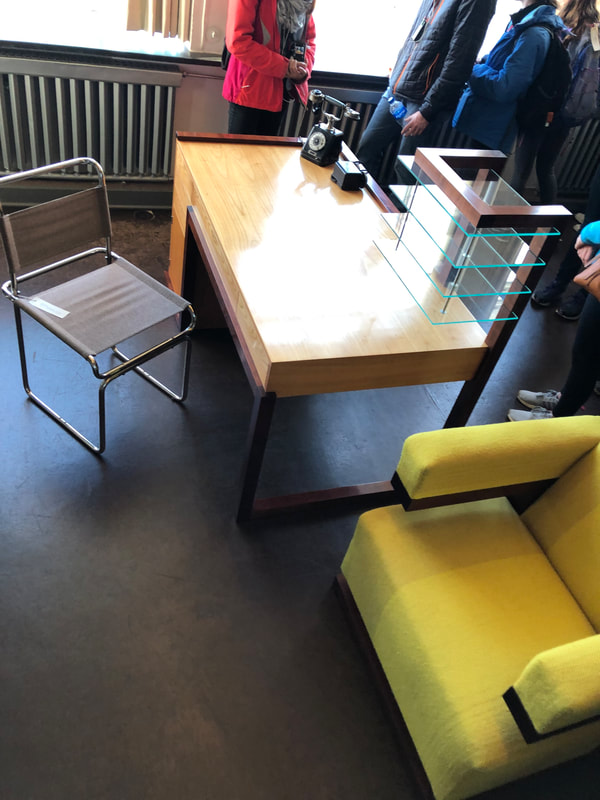
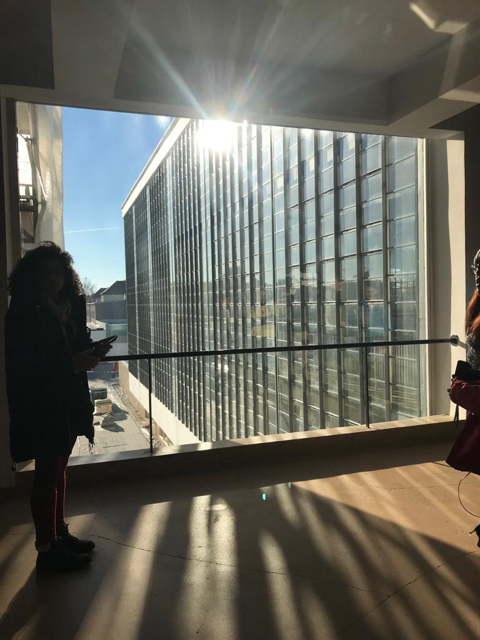
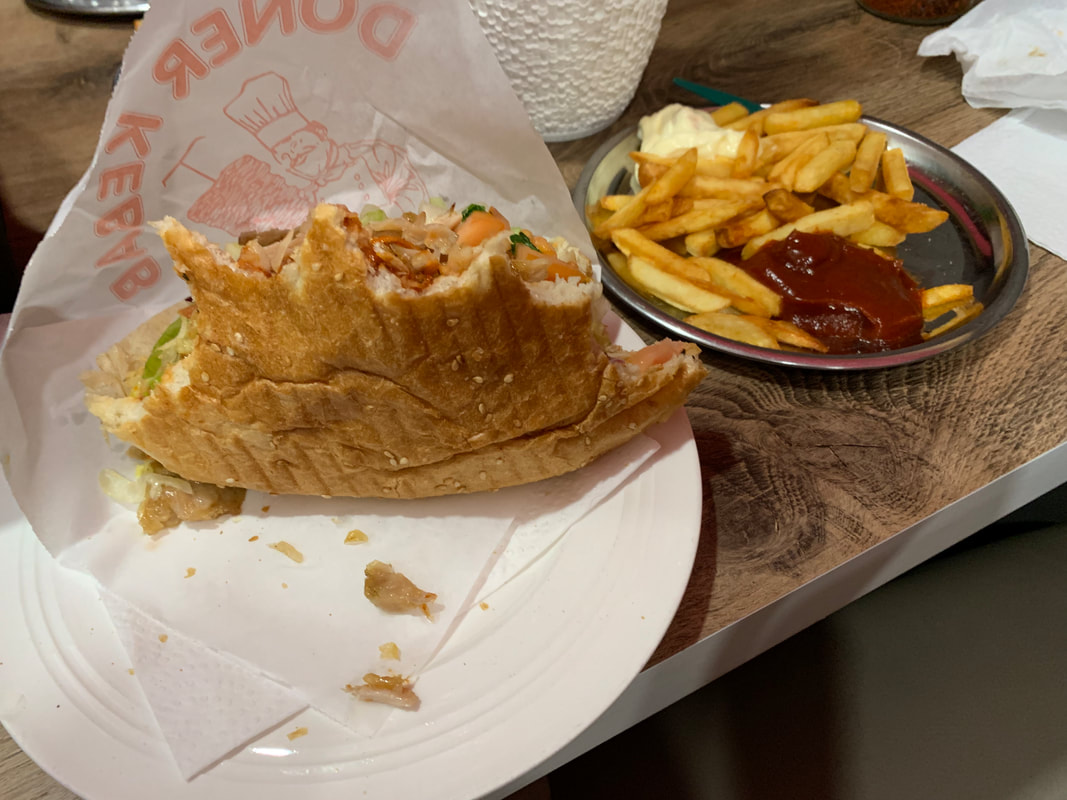
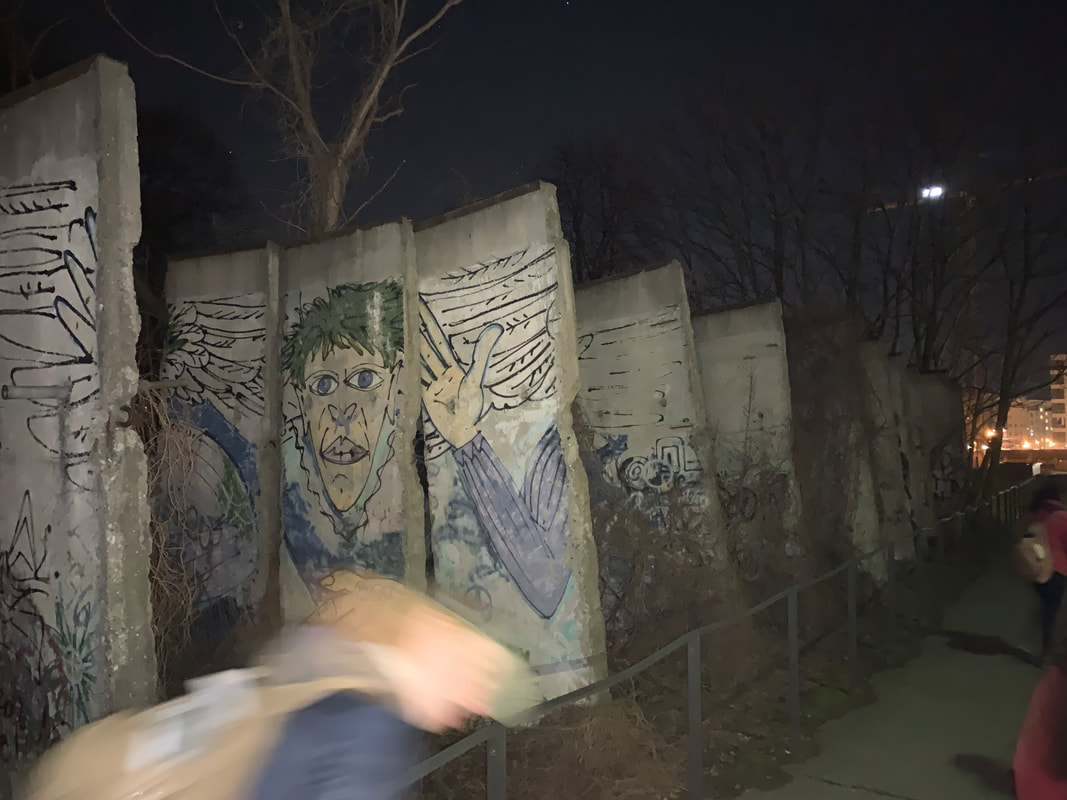
 RSS Feed
RSS Feed
